Story and Photos by ITN European Reporter Herve’ Rebollo.
Salut à toi American rider,
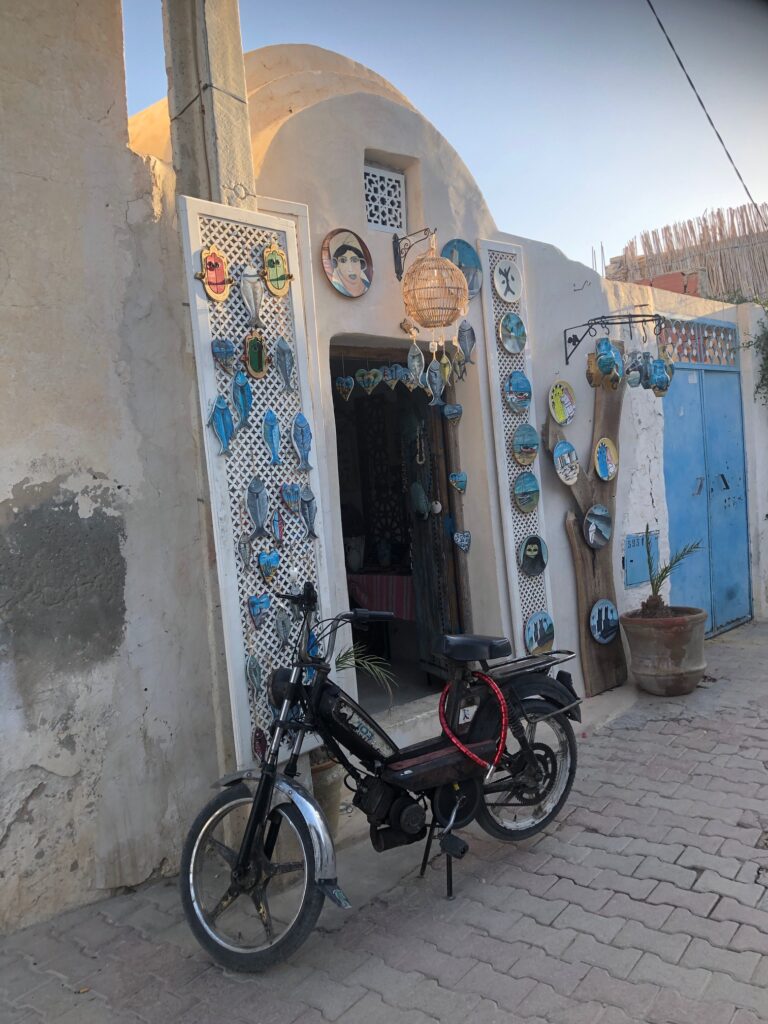 You may remember that I’m definitively a traveler. I really love spending my time (and money) to ride this planet and meet people…
You may remember that I’m definitively a traveler. I really love spending my time (and money) to ride this planet and meet people…
This why I was lucky enough having one week on the Island of DJERBA/TUNISIA this mid-October. I know: you may think I’m a little nut spending time in an Arabian country in the current international context …I’ll just answered that At almost sixty, after a life of traveling across this wild wide world, I’m a little experienced. But I’ll mainly tell you my friend: don’t believe all the nonsense that TV shows pour into our brains. I’m not against media, but they do not exactly reflect the reality. Except IRON TRADER NEW of course!!!!!!!!
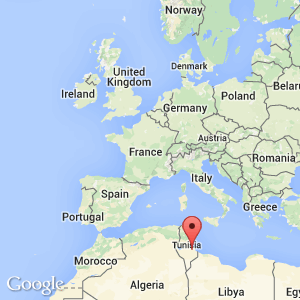 Djerba is a small island in south Tunisia (not very far from LIBYA) with white sandy beaches and whitewashed domed houses. It’s the largest island of North Africa at 514 square kilometers (198 sq mi), in the Gulf of Gabès, off the coast of Tunisia. It had a population of about 163.000 at the 2014 census. Citing its long and unique history, Tunisia has sought UNESCO World Heritage status protections for the island, and, in 2023, Djerba was officially designated a World Heritage Site.
Djerba is a small island in south Tunisia (not very far from LIBYA) with white sandy beaches and whitewashed domed houses. It’s the largest island of North Africa at 514 square kilometers (198 sq mi), in the Gulf of Gabès, off the coast of Tunisia. It had a population of about 163.000 at the 2014 census. Citing its long and unique history, Tunisia has sought UNESCO World Heritage status protections for the island, and, in 2023, Djerba was officially designated a World Heritage Site.
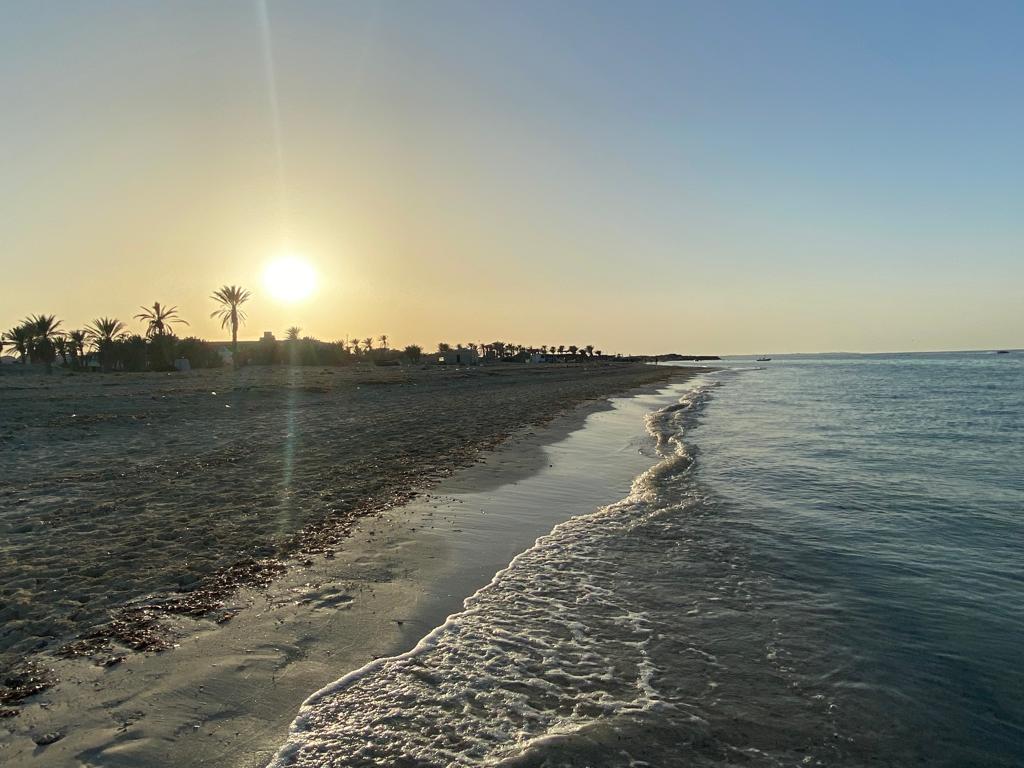 The Djerban people are culturally distinct from mainland Tunisians and preserve many of their traditions and unique architecture. The medina in Houmt Souk is particularly pleasant and a cheap place to stay for relatively hassle-free shopping and eating. Resort hotels line the eastern coast in the Zone Touristique.
The Djerban people are culturally distinct from mainland Tunisians and preserve many of their traditions and unique architecture. The medina in Houmt Souk is particularly pleasant and a cheap place to stay for relatively hassle-free shopping and eating. Resort hotels line the eastern coast in the Zone Touristique.
The best time to visit Djerba and enjoy the sun and the sea is the summer, from June to September. In May the temperature is warm enough, especially in the second half of the month, but the sea is still cool. In October the sea is still warm, and there are still many warm and sunny days, but the first depressions, which bring the first rains more to the north, can bring some cloudiness and a bit of wind. But this month of October 2023 was simply perfect; sunny, not too hot and a little windy (Djerba has a hot desert climate that borders on a hot semi-arid climate).
Of course, the local food is amazing …
And (very important for an always thirsty biker), you even can find local productions of beers … A data which is not very well known is that according to official statistics released by World Health Organization (WHO) ,Tunisia ranked first in alcohol consumption with. The Tunisian citizen drinks twice as much as the German one, and despite what is known, Russians and Germans come behind Muslims like Africans and Iranians in alcohol consumption. Leading the list is the Chadian citizen with 34 liters in year. Tunisia and UAE share the first place for alcohol consumption in the Arab World.
And It’s a fact that you can find numerous bars all along the streets …
Where you can taste the local coffee which is always a good one (forget American coffee please).
Tunisian people are really smart and cool. The country’s reputation is for being welcoming. And it is a reality (even if it’s a little bit more complicated knowing the country is faced with a huge wave of immigration from the African continent these last years).
When in Djerba, you can choose to stay in one of its famous hotel …
… or rent a “simple tiny” local house … the choice is very huge.
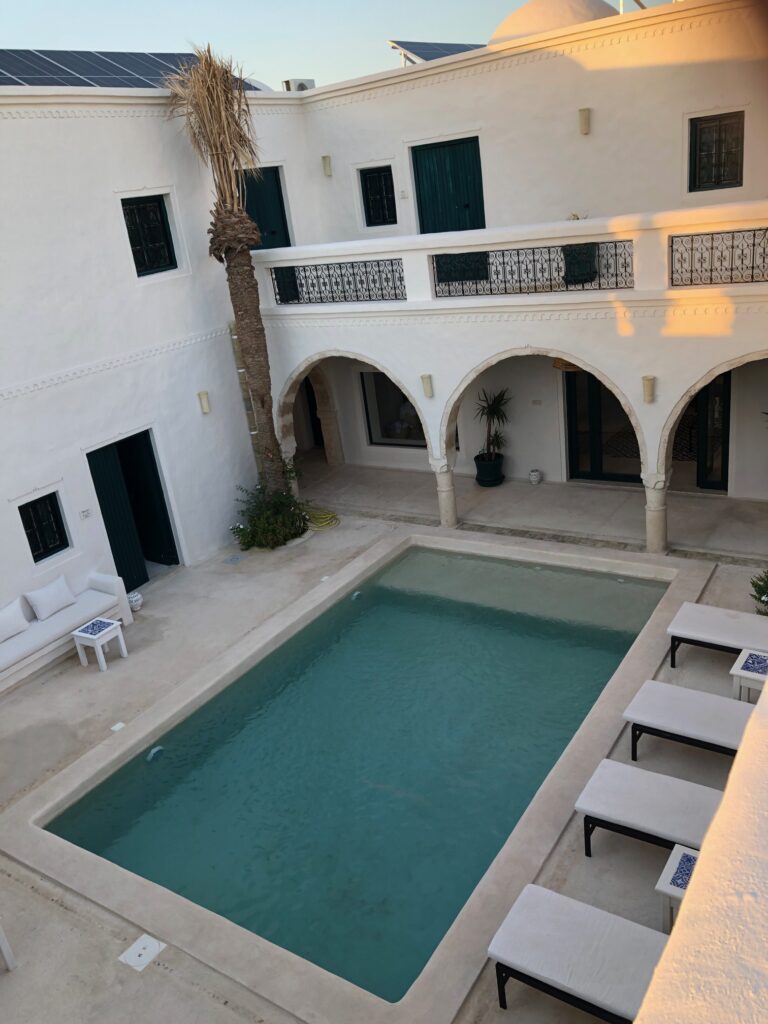
Three things surprised me during my stay on the island.
First : it’s a place where the past and the present intersect every day.
Where past technologies interact with modern ones.
Second: cats are absolutely everywhere (in one week in Djerba, I’ve seen more cats than in my entire life). They are the absolute kings of the streets.
Third (and it’s the most exciting aspect for me): there are more mopeds and scooters than cats.
Tunisia has about 11.9 million inhabitants, and driving is the most used type of transportation. Many cars, mopeds, scooters, traffic jams, and irresponsible driving habits make traffic chaotic. Accidents and also fatalities on the road are unfortunately common.
Driving in Tunisia is challenging, and a lot of patience is needed. It’s essential to remain alert and observe surroundings. What makes driving in Tunisia difficult is the congested roads and drivers’ disregard for the rules. Unfortunately, most drivers do not follow the rules, traffic signs, markings, or signals. The road signs are similar to the ones in Europe and written in Arabic and Latin alphabet. In Djerba, the roads are in a global good state (but do not go on the shoulders : there is no shoulders). All traffic drives on the right-hand side of the road. The main traffic roads condition is standard and generally in good shape as well modern and new highways. Some undetected potholes might occur in the south of Tunisia. Things such as congested streets, insufficient lighting systems along the roads, poorly marked speed bumps, and low-quality conditions of roads in rural areas make driving more challenging. And of course, bikers/drivers should pay attention to pedestrians as they might cross the roads, even on highways.
The two-wheels park here is incredible: by its number of units, its diversity and its condition.
Almost none big cylinders. You will not see Harley Davidson, Indian or BMW motorcycles. Or may be some that belong to European bikers having a one or two weeks long trip (in a week in Djerba, I’ve seen only one Honda Gold wing – the one and only big bike I saw). But thousands and thousands mopeds and scooters.
Many quads of different types and generally in good state. But they are mainly dedicated to the rental activities for tourists, on beaches or in desertic places in the center of the island.
Many old French mopeds in a state … Oh my …you have no idea!
I’ve discovered this brand that I didn’t know. It’s assembled locally in Tunisia under a Chinese or Korean license FORZA brand. The price is about 1000$.
And this very rare (even in Europe) Chinese KEEWAY …
In the different cities of the island, of course you will find many little dealerships.
They propose brand new mopeds or scooters …
…or some used one which are more … vintage should I say.
And their workshops … have their own quality standards.
But the guys are able to fix almost every kind of breakdown in a very short delay.
And at the end, it finally works, the bike owner can go back home or back to work with its moped.
But please, don’t ask for a brand new painting or a cleaning of engine.
Many of these mopeds doesn’t have any (front or rear) lights. By night its terrible. You don’t see them. As there is not so much street lights, it’s a very difficult exercise when driving a car, with shoulders in very bad state, you try to avoid these invisible little two-wheels. But in any case, when in your car, try to stay on the road because, many pedestrian are walking all around (and they are invisible too).
But some try to do their best and adapt the led technology at their old French moped.
Surprising because I suppose that this led system cost more than the mopped itself. But when you love your bike … nothing it too much for it!
Local insurance companies estimate that 90% of these moped owners have absolutely none insurance and that 20% of the road accident involve a two-wheel. And, on a personal estimation, I think that only 1% of these local riders (famous one percenters I suppose, lol!) wear a helmet. We can see on the following photo that this biker has a high level of safety awareness.
It’s clear that the local weather, where it’s about 95 Fahrenheit degrees daily, doesn’t help to wear any gloves, jacket or safety equipment. Especially when the police will never arrest you for that kind of details.
But to be honest, I have to say that drivers/bikers are very cool and smart. I ride daily in Paris, one of the most aggressive city in the world and driving in Djerba has been a dream. Never been so cool behind a wheel.
I don’t know why, but 90% of the scooters have lost their front fairing (?). Do not hesitate to send me any explanation.
When talking about gas station, you clearly enter in another (local) dimension. Of course, you can find many modern gas stations (British Petroleum/BP, SHELL, TOTAL, etc.). But the system of gas distribution for mopeds and scooters belongs to another world …
I don’t know why, but owners of small engines buy their gas in bottle of 1,5 liter sold in very little shops or even directly on the shoulder of the road (sold very often by teenagers). A bottle is about 3$.
And of course, the store owner fills the bottle himself with a “personal system” (which is more or less the same from store to store). He empties 30 or 40 liter cans into a siphon, on which an old cloth is placed (to filter impurities) directly into old plastic bottles. Obviously, he doesn’t want you to take a photo of the operation.
But don’t worry, everything is under control, with guys smoking and phoning all around, with a 95 Fahrenheit degrees temperature, there is absolutely none risk of fire or explosion and your safety is 100% guarantee.
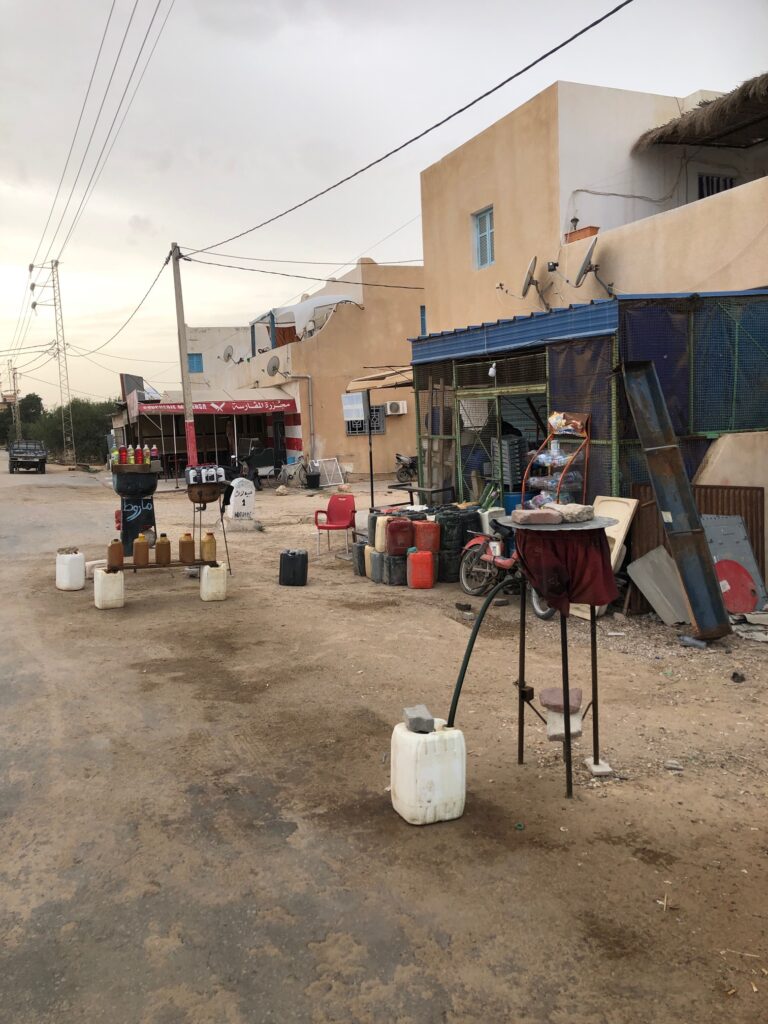
Also note, among the motorized surprises, we find a commercial trike under the brand UNISCOOT (I think assembled in Tunisia under Chinese license).
I saw many of them on the road.
To summarize, I should say that between 40 and 50% of these two-wheels are constituted of old French nails.
Between 20 and 30% are scooters.
And between 20 and 30% are brand new ones.
In any case, Tunisian people has a great and huge two-wheels culture for small cylinders and are cool riders. I really enjoyed my stay between them (even if two or three time I have had a heart attacked trying to avoid one of them int the heart of the night).
Do not hesitate to cross the sea to spend one or two weeks on this beautiful island, I’m sure you will like it.
See ya soon on the road, who knows?
Hervé, your French biker friend.




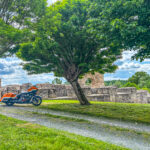
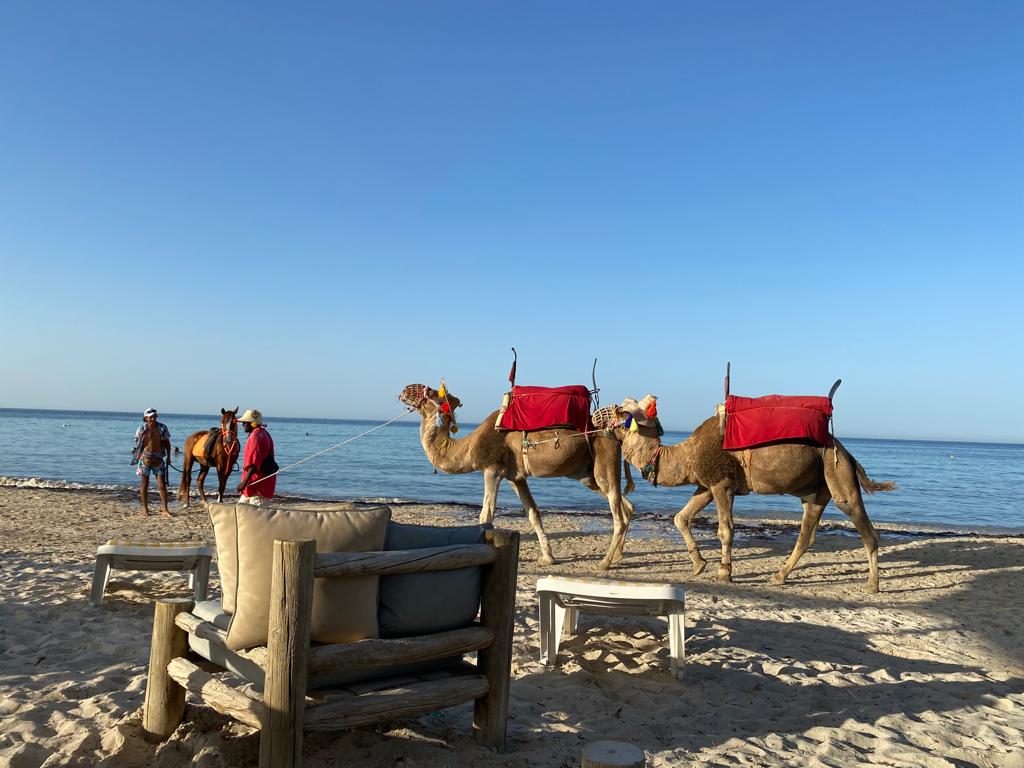
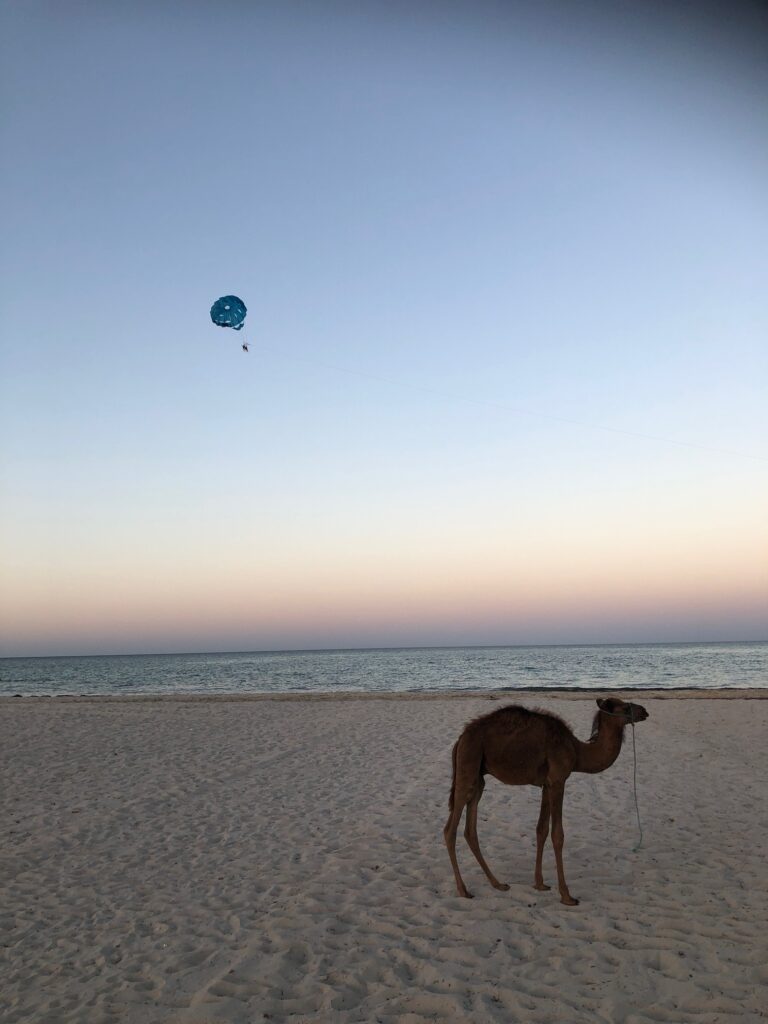
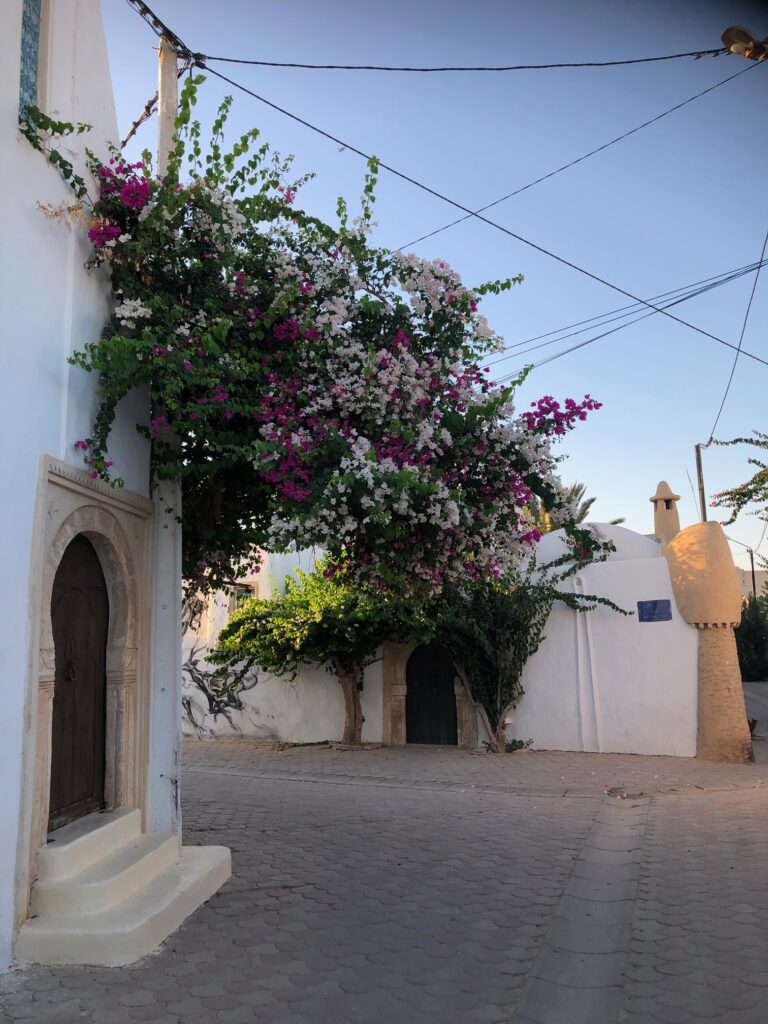
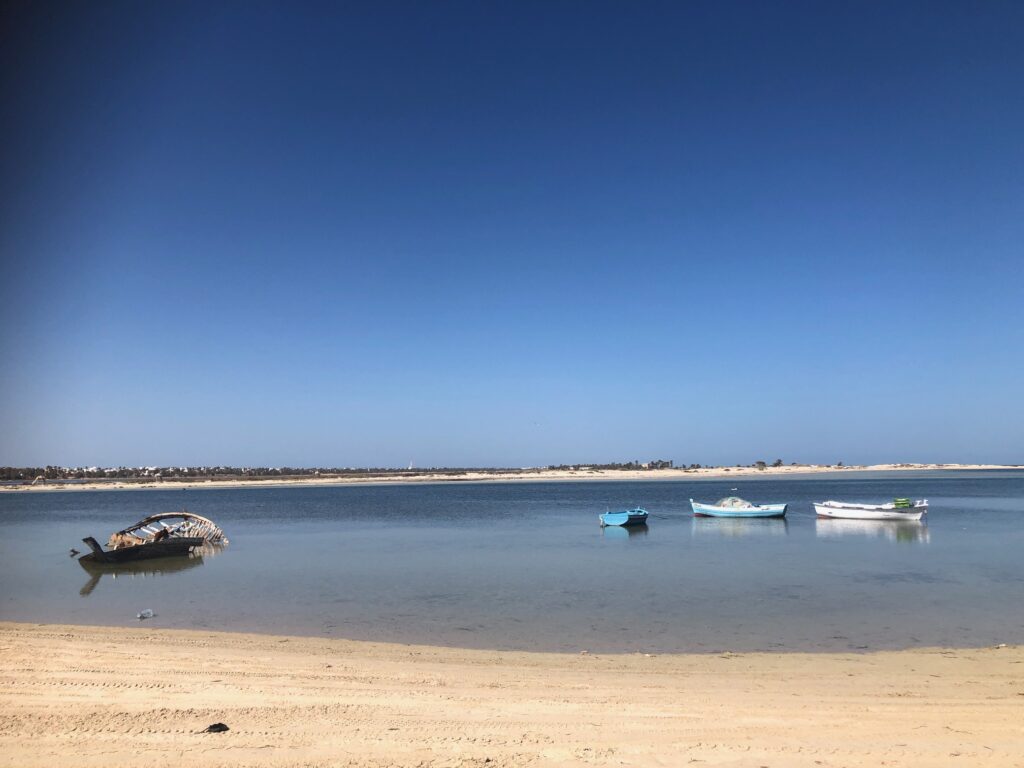
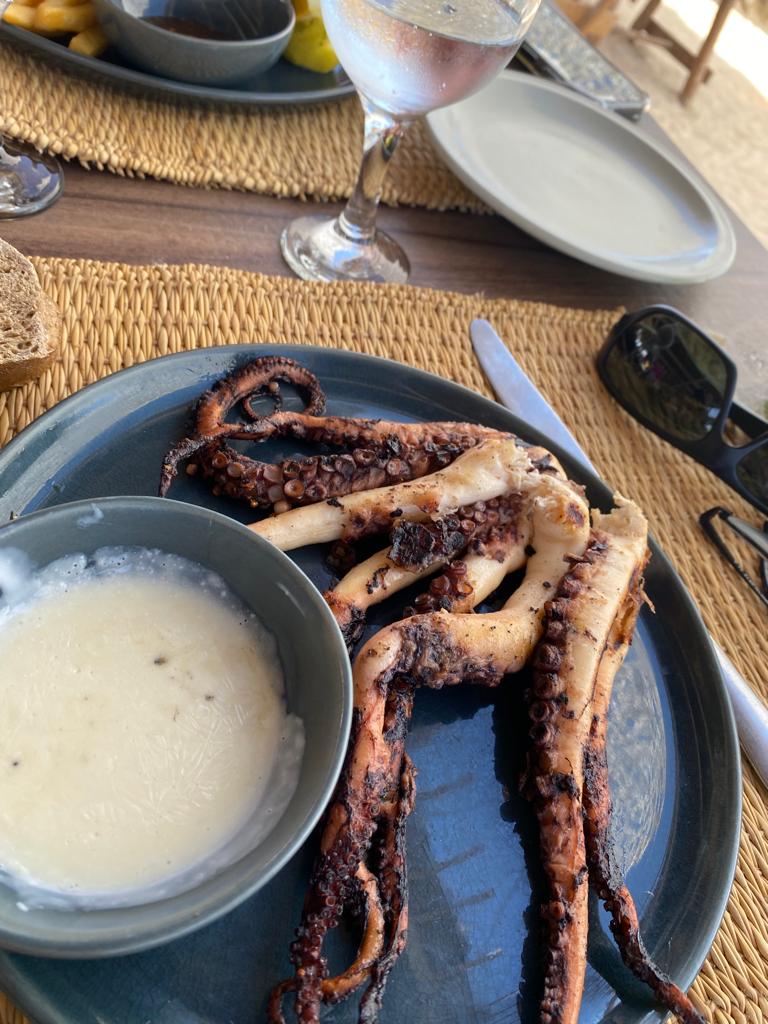
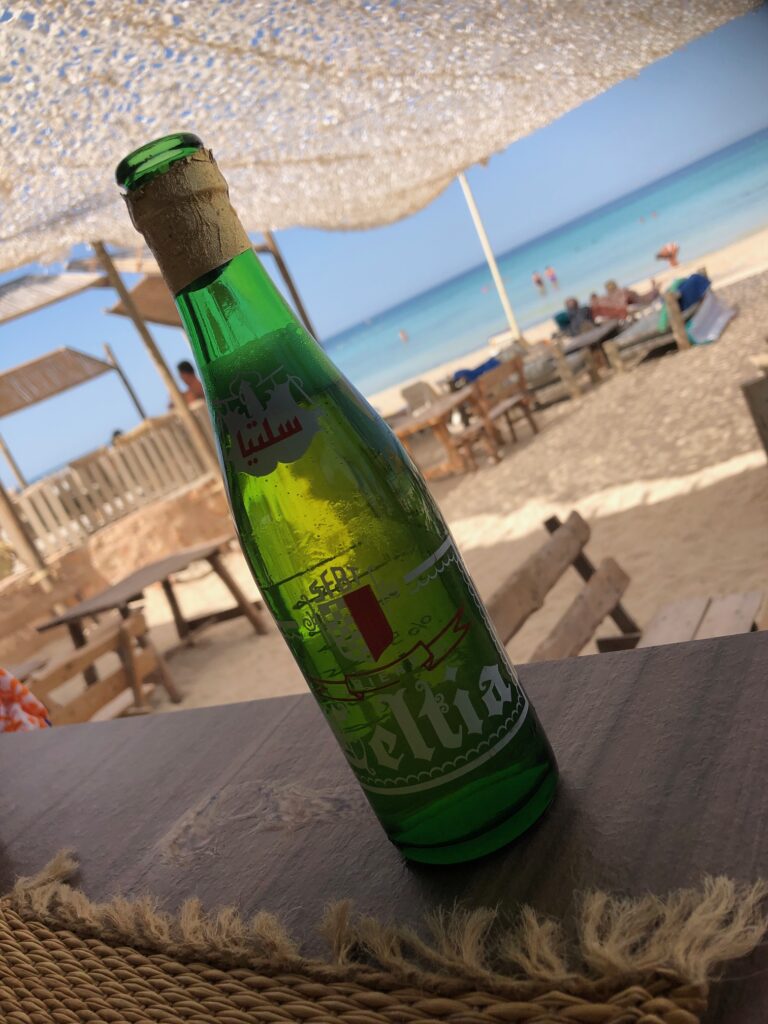
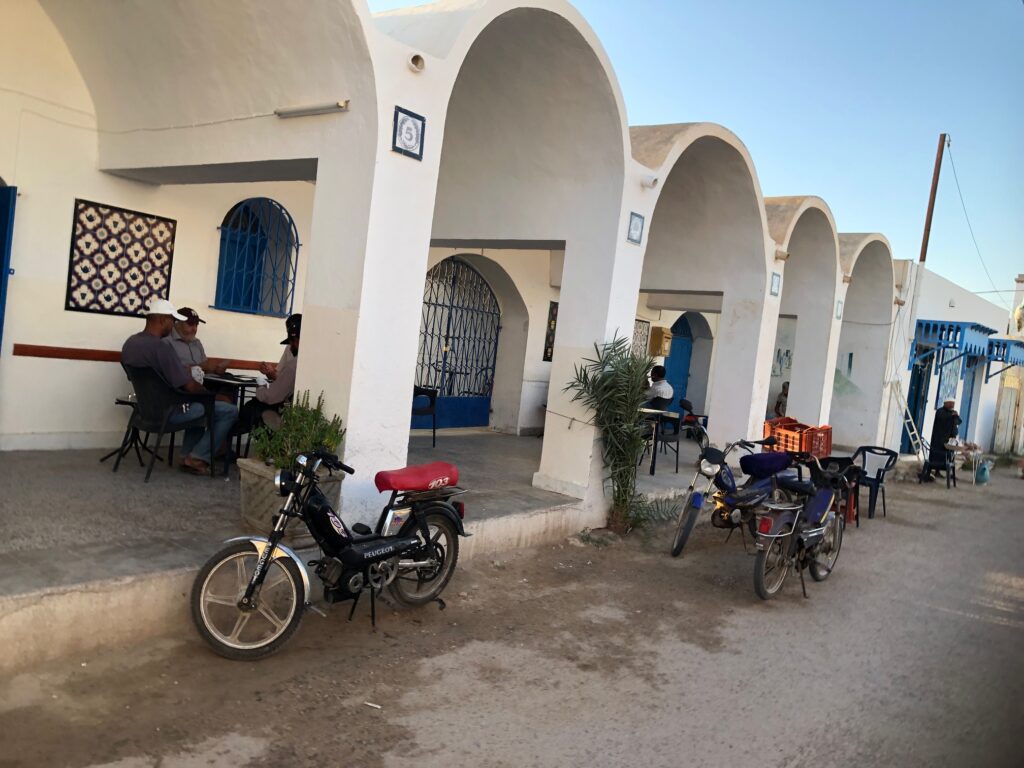
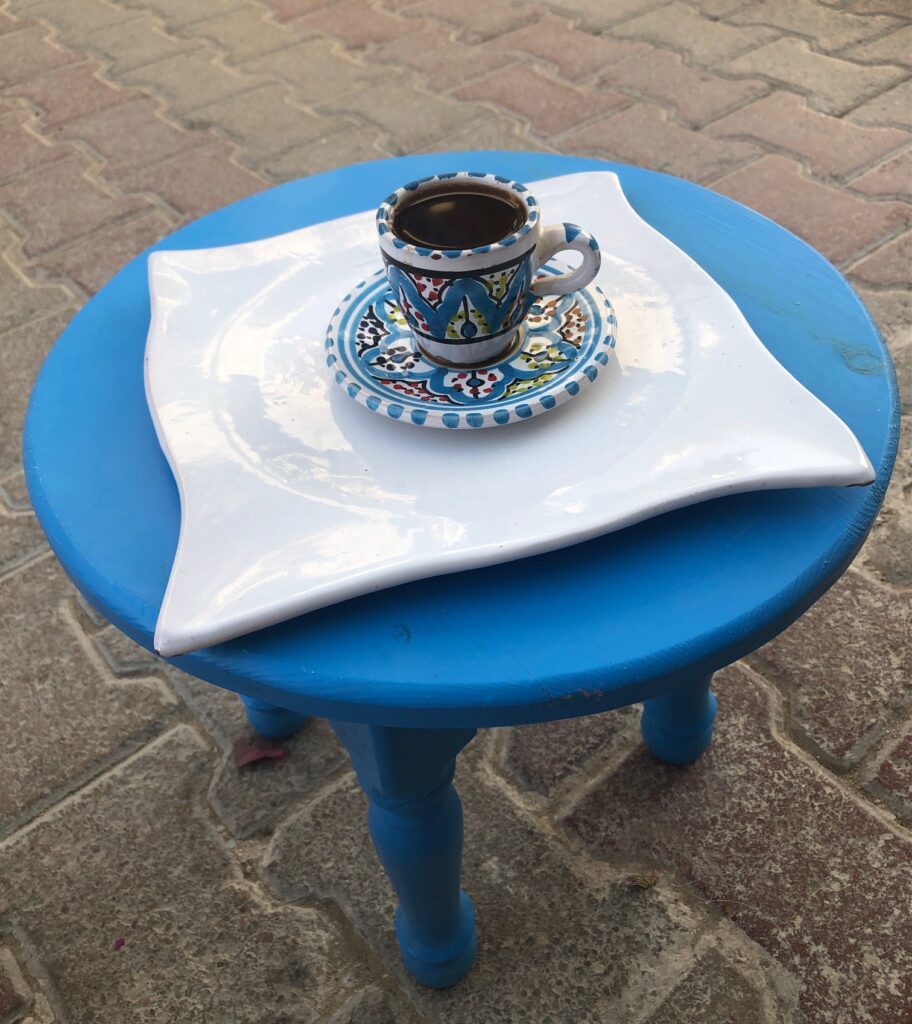
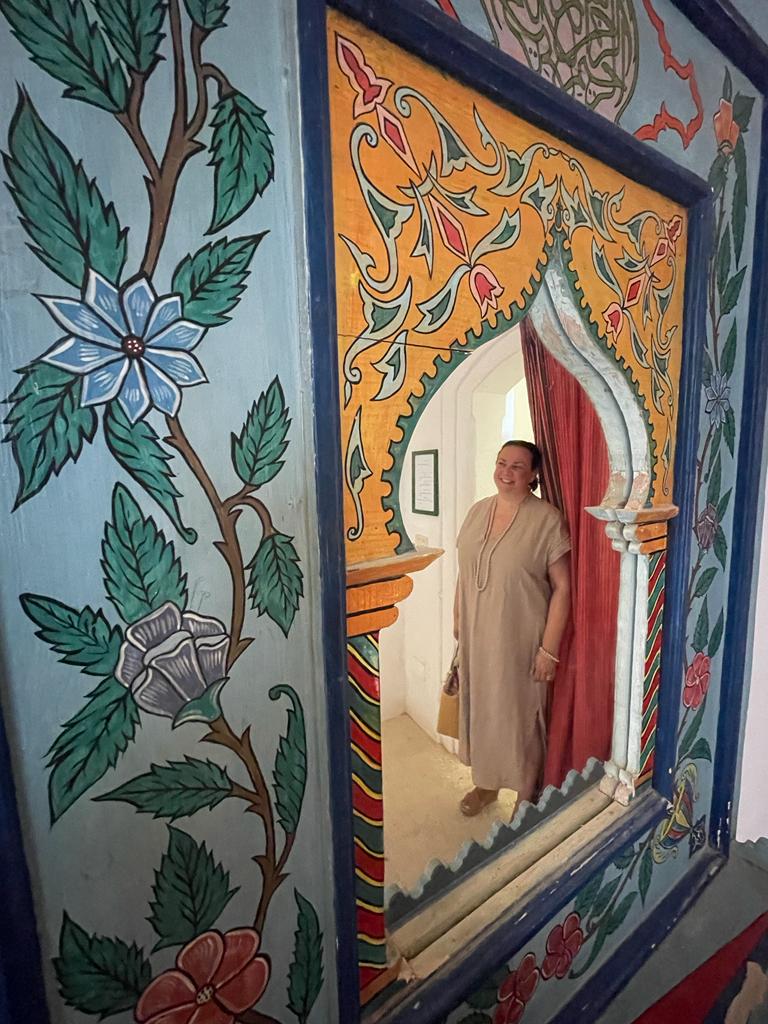
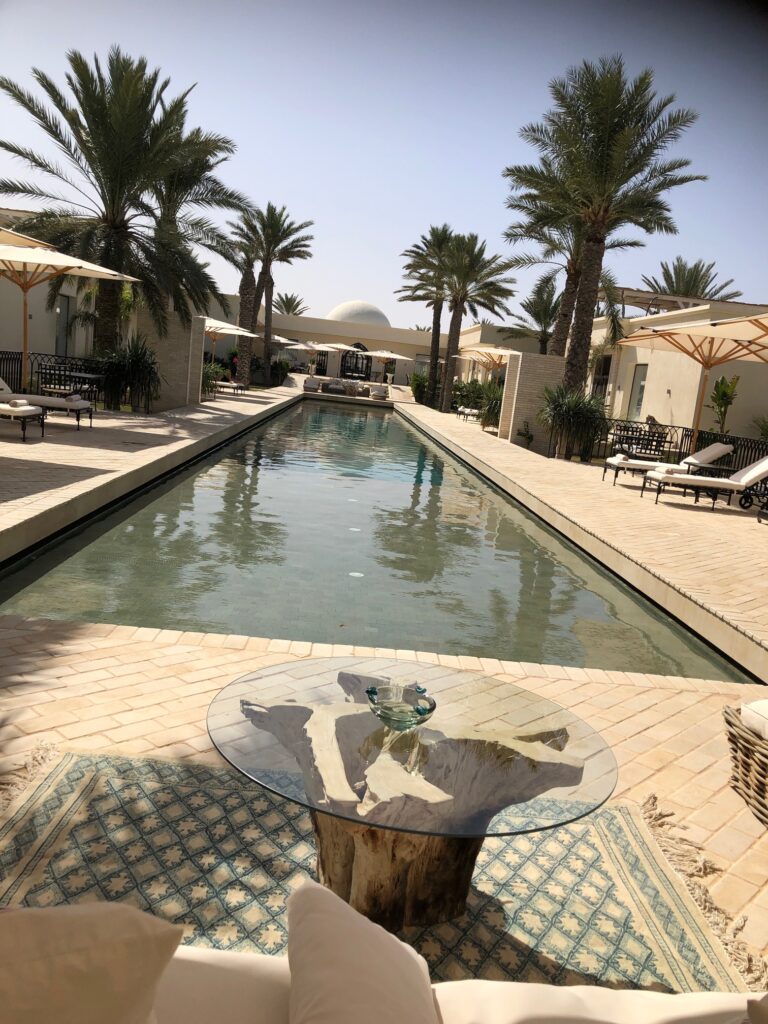
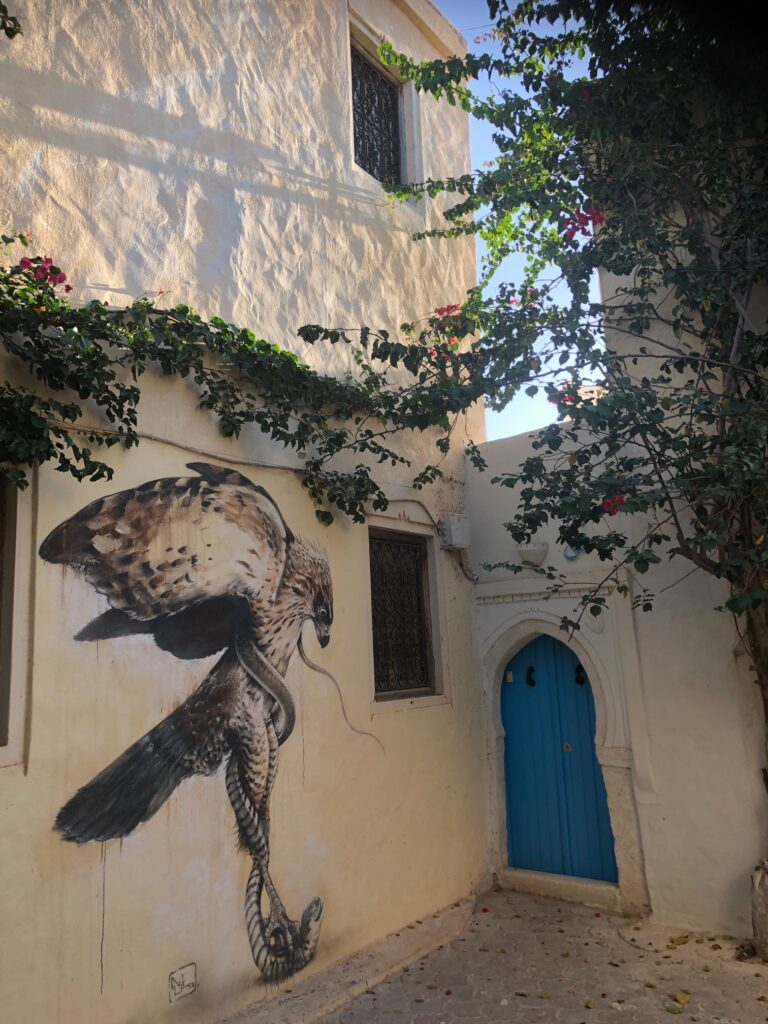
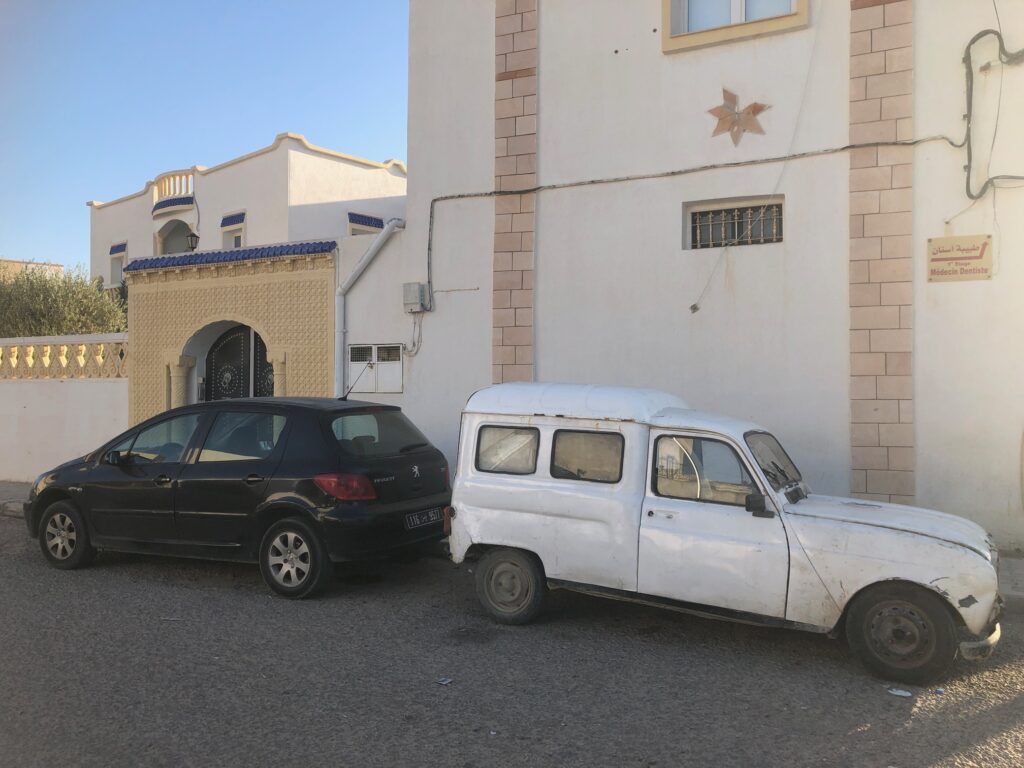
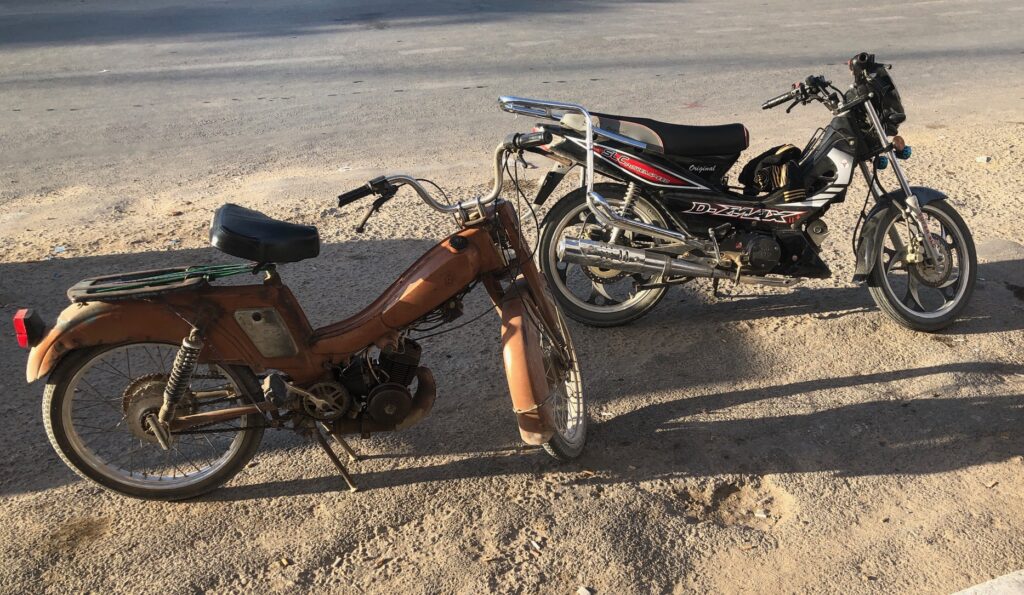
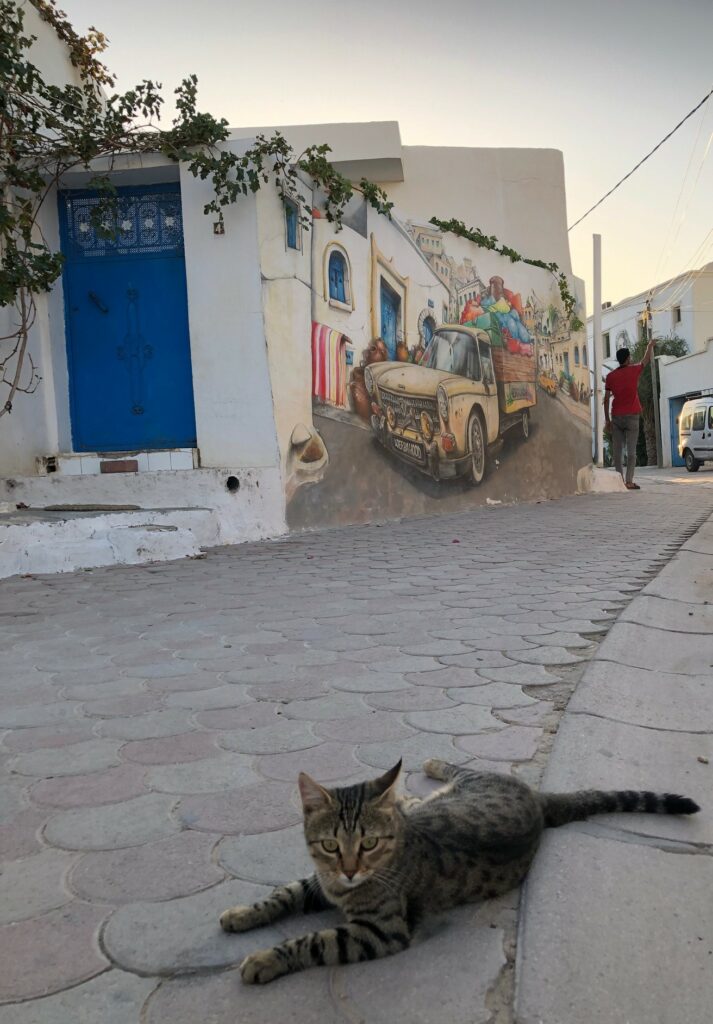
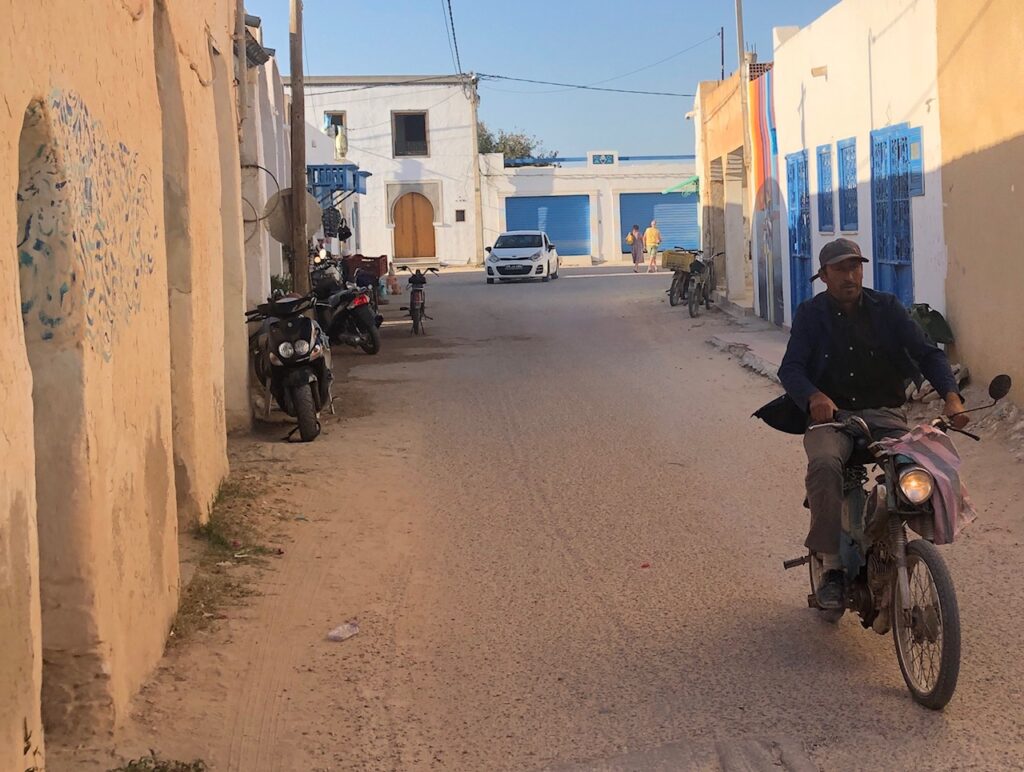
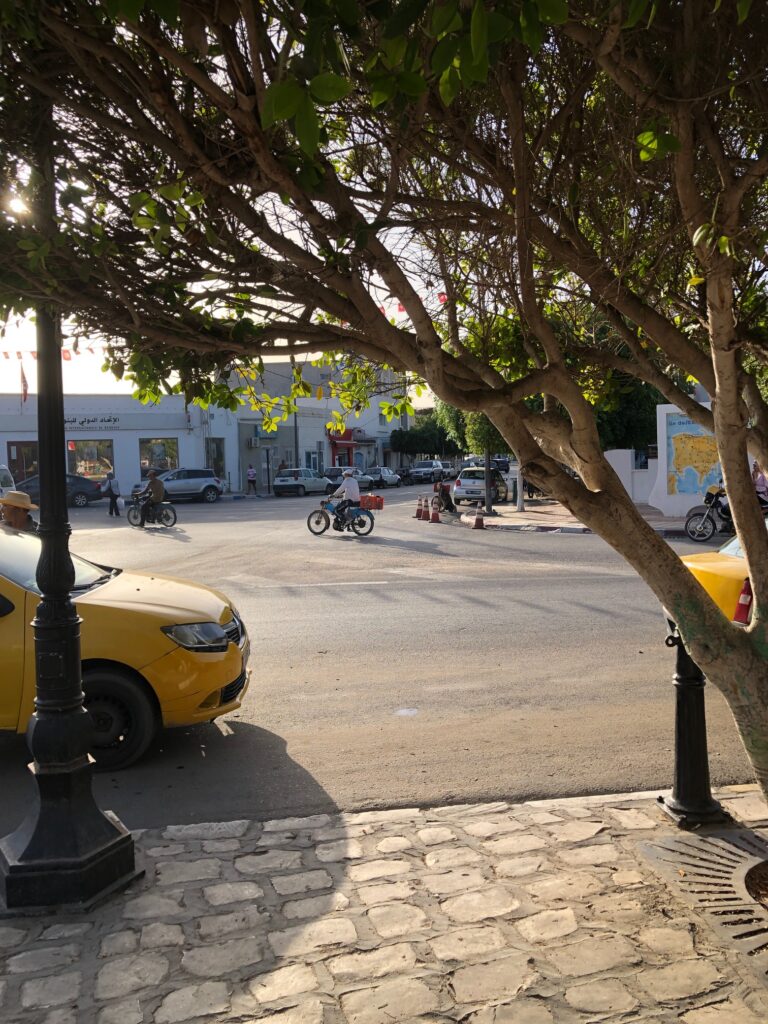
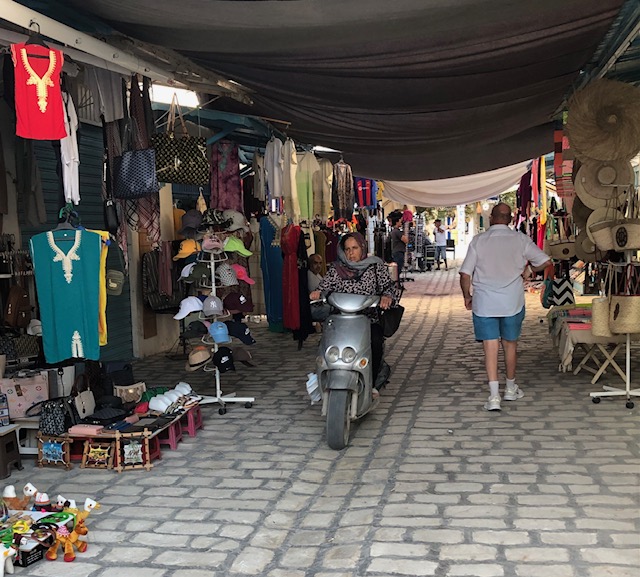
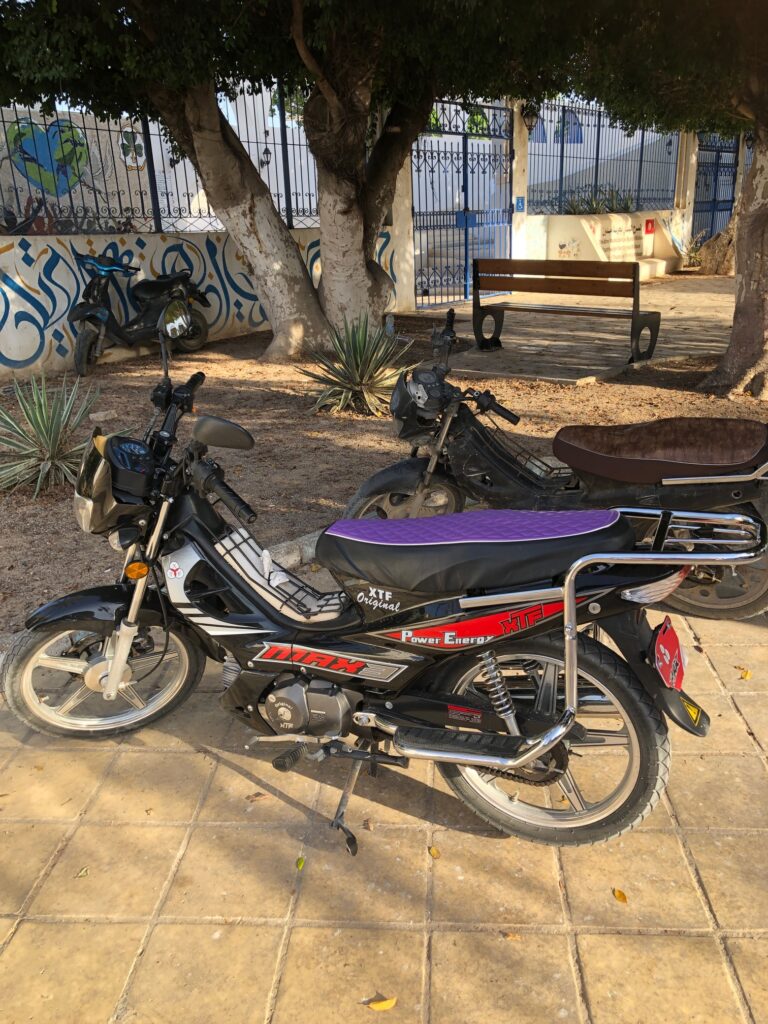
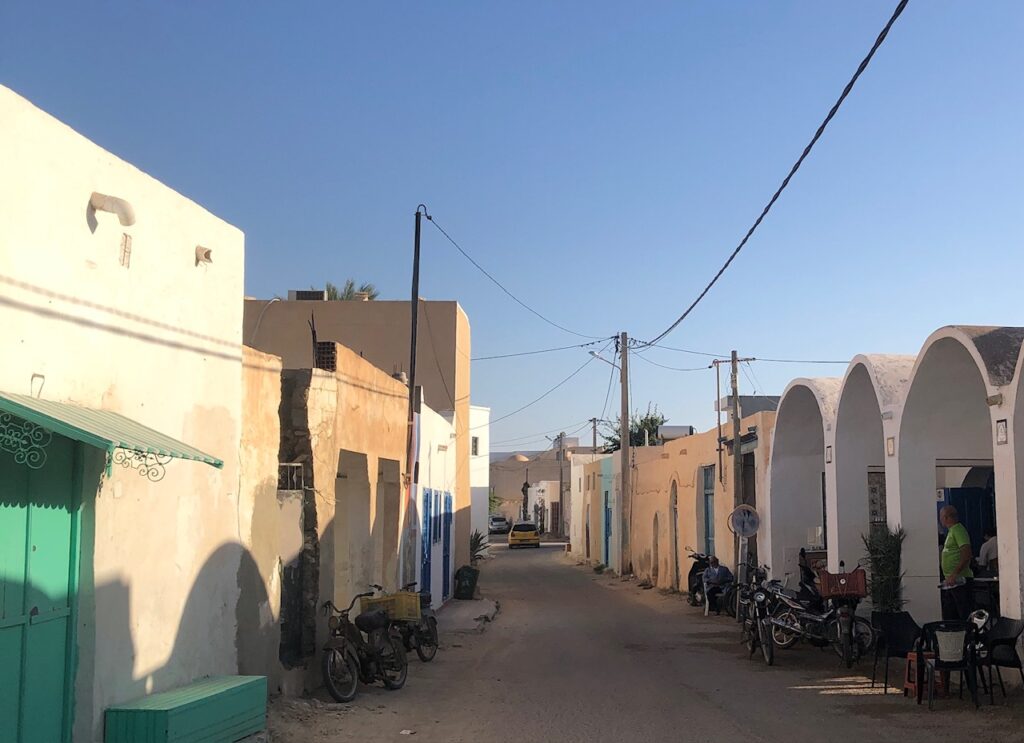

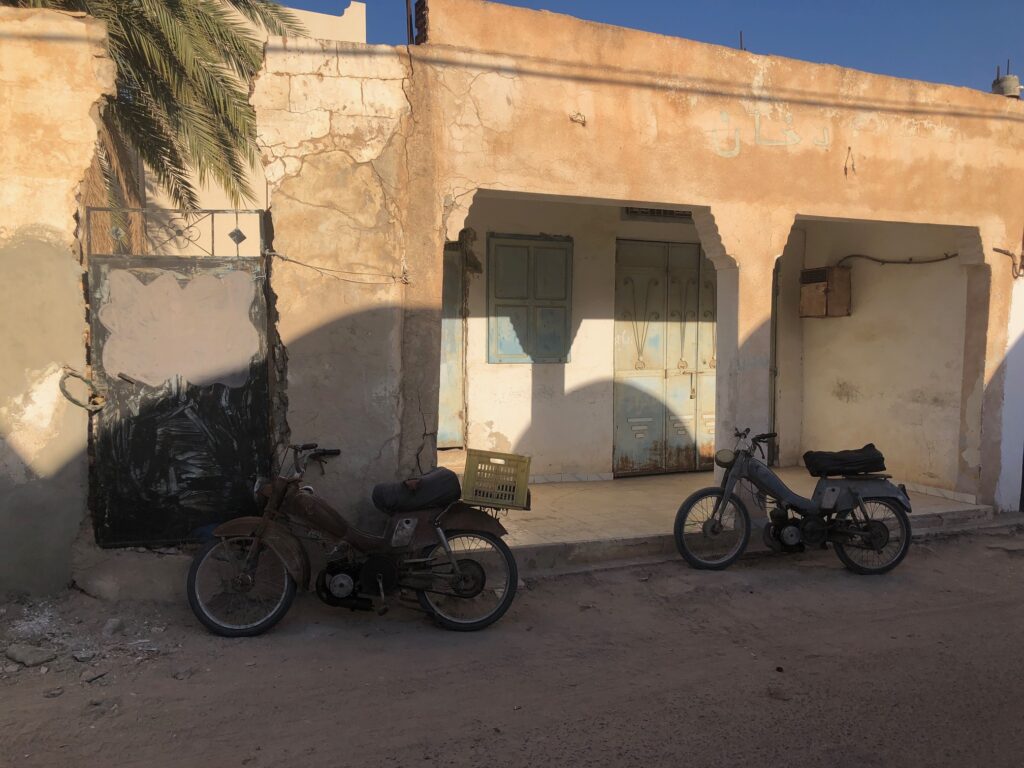
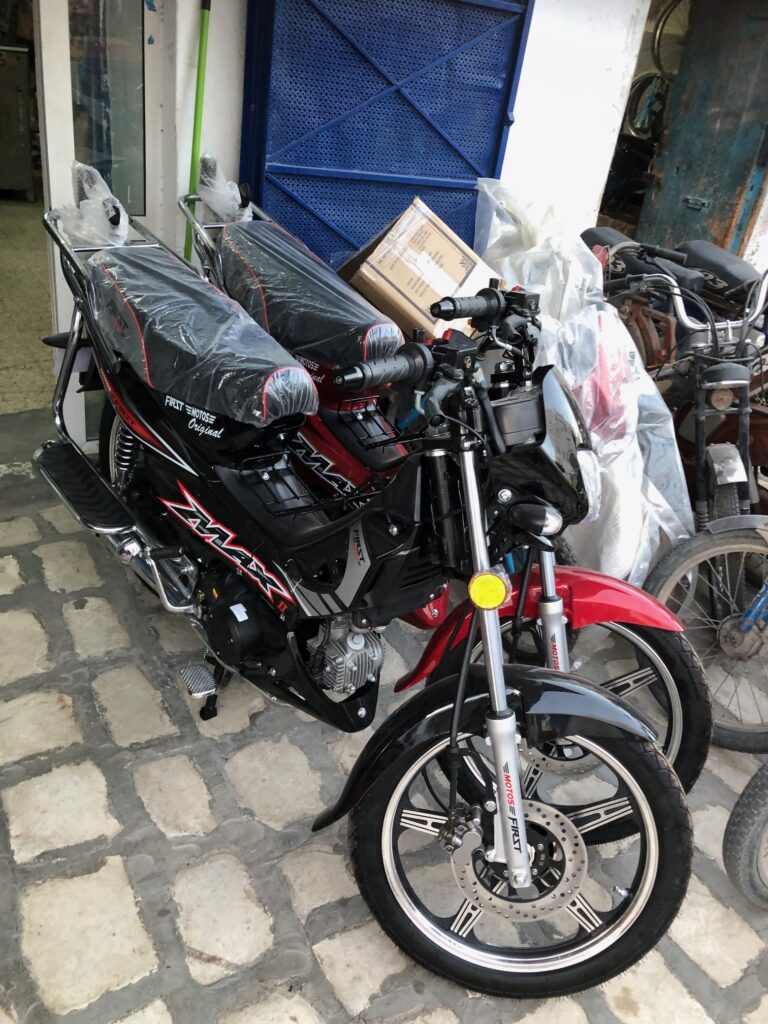
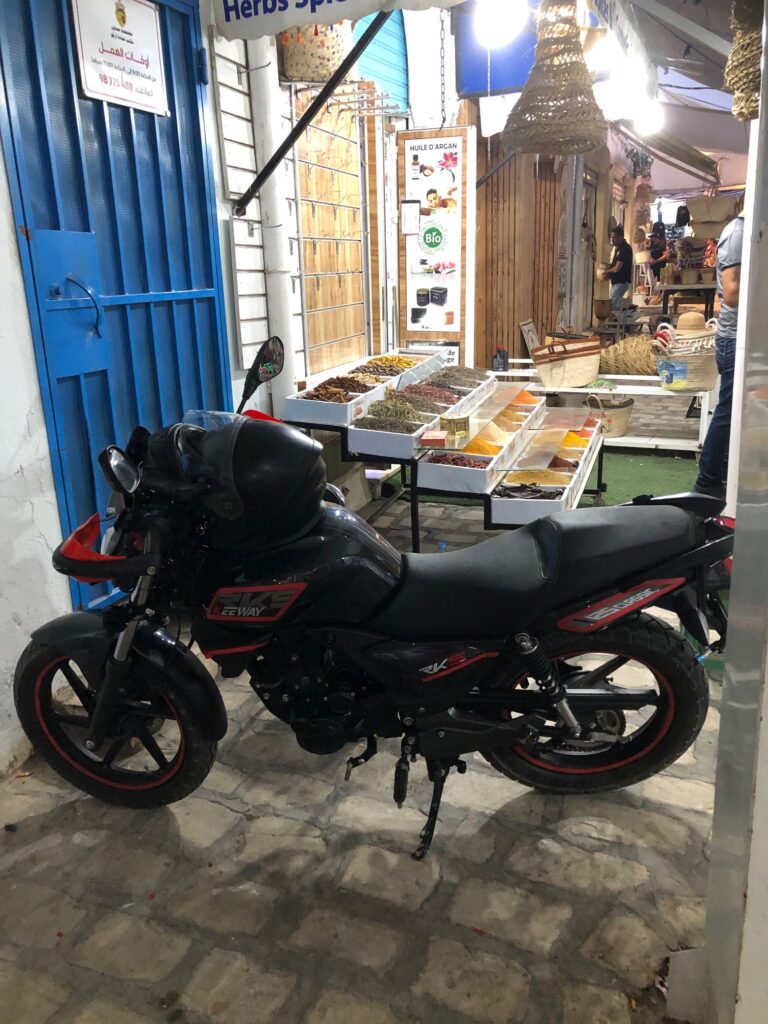
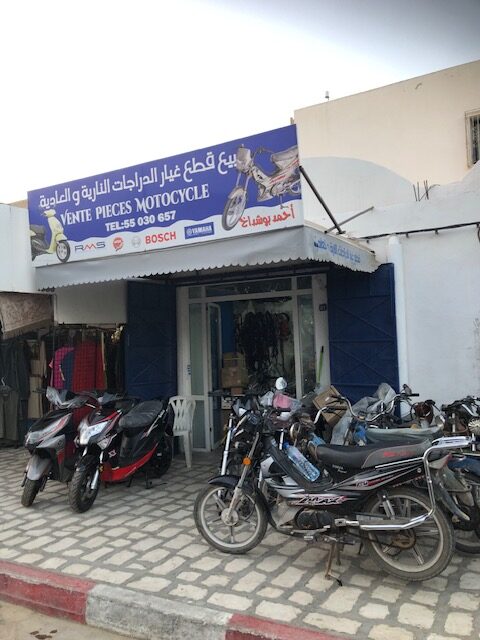
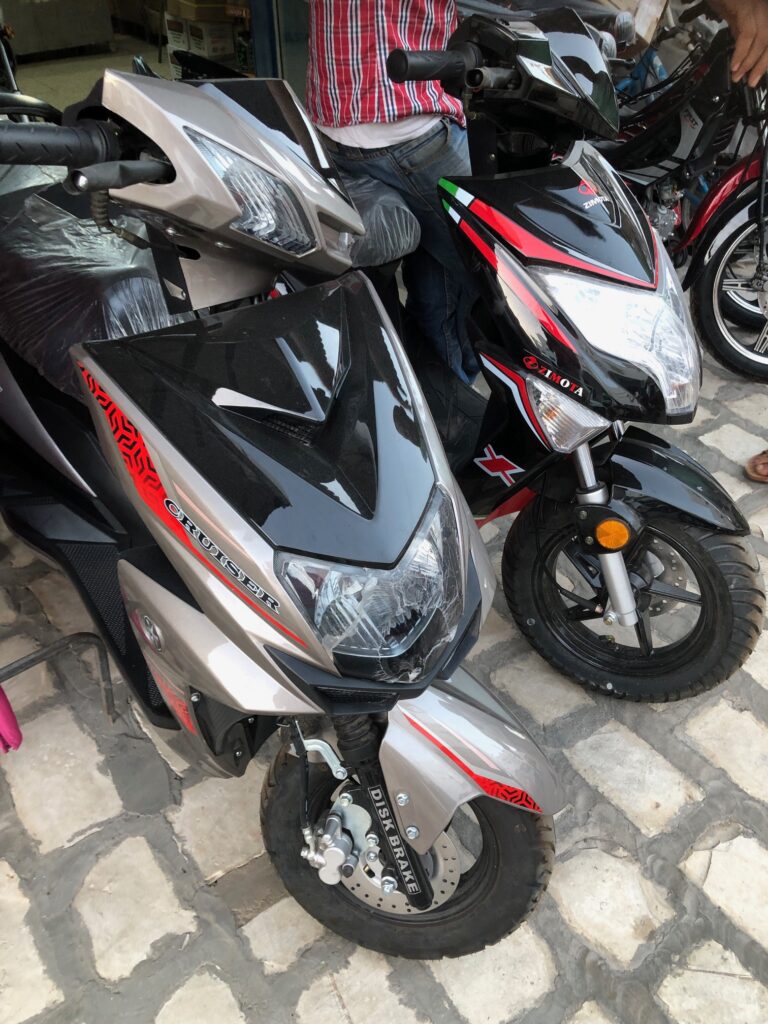
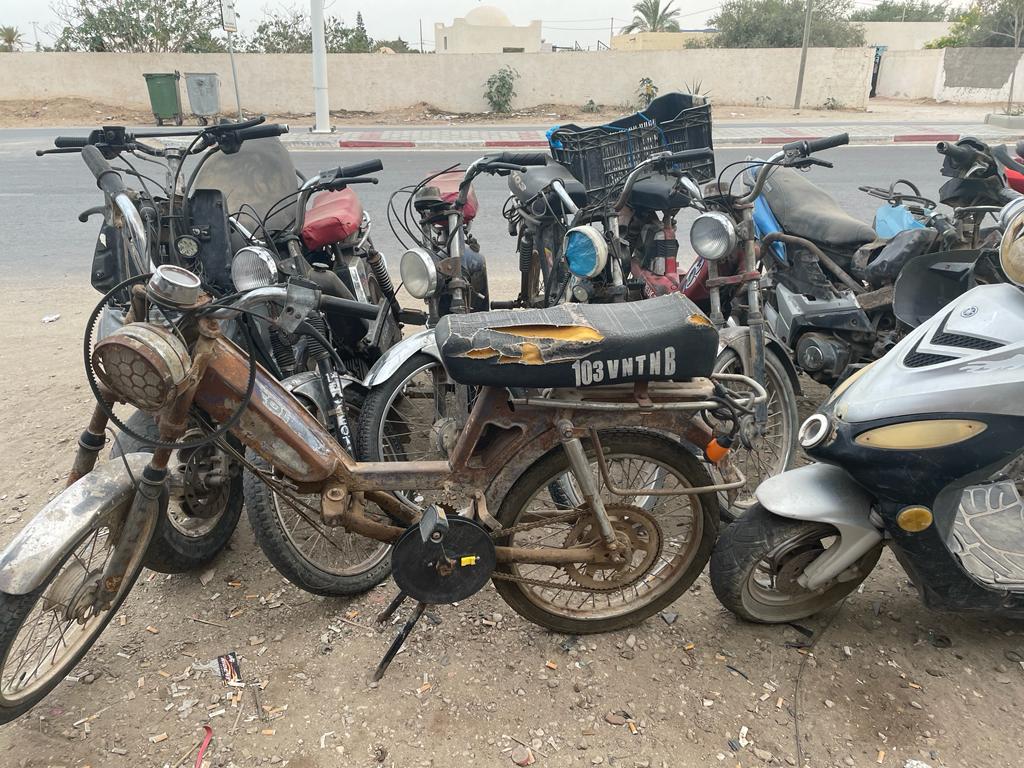
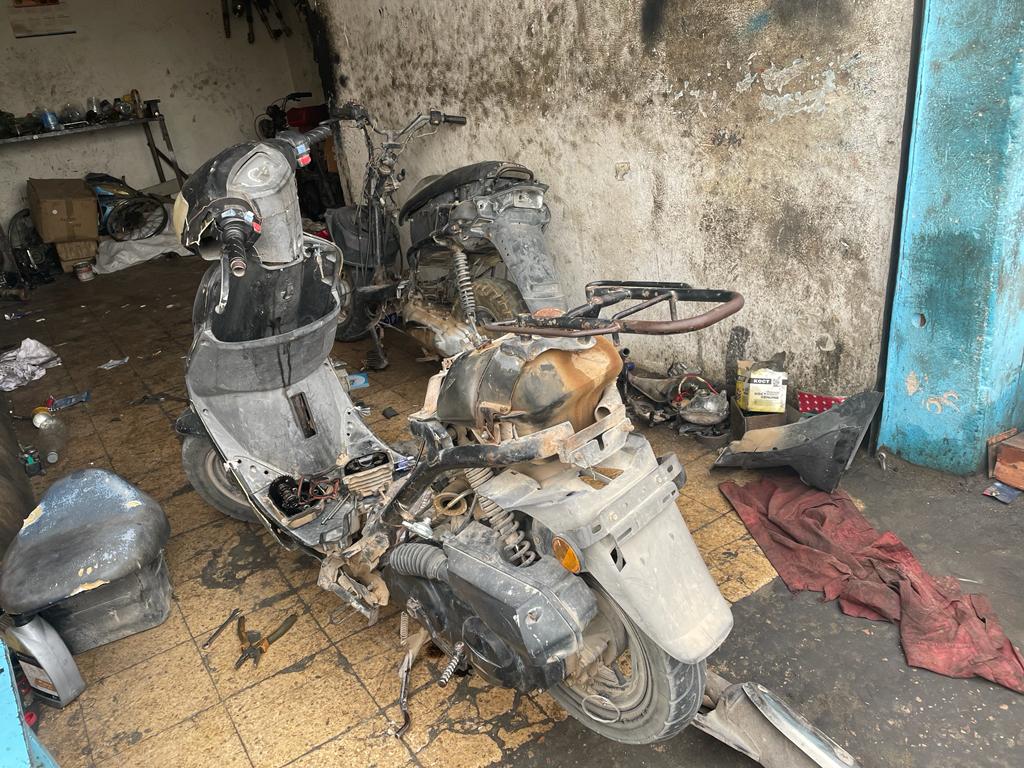
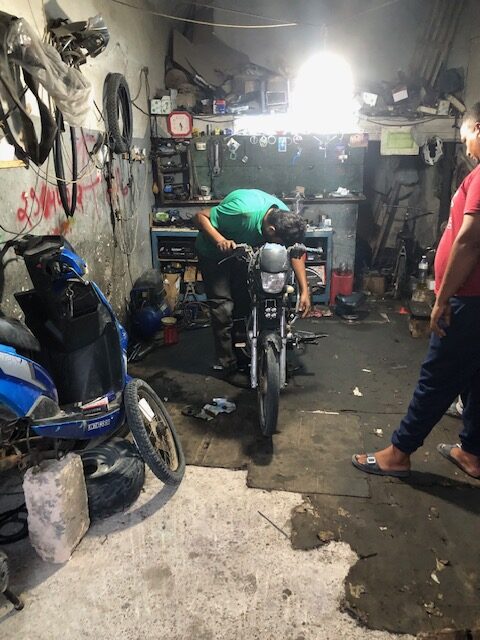
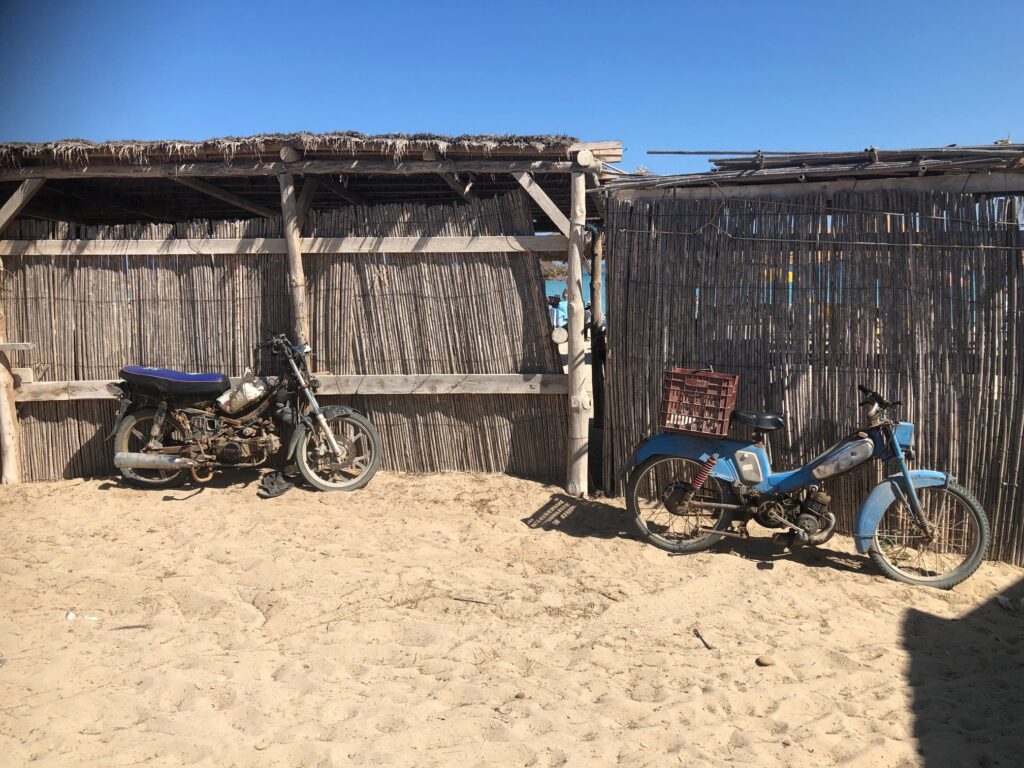
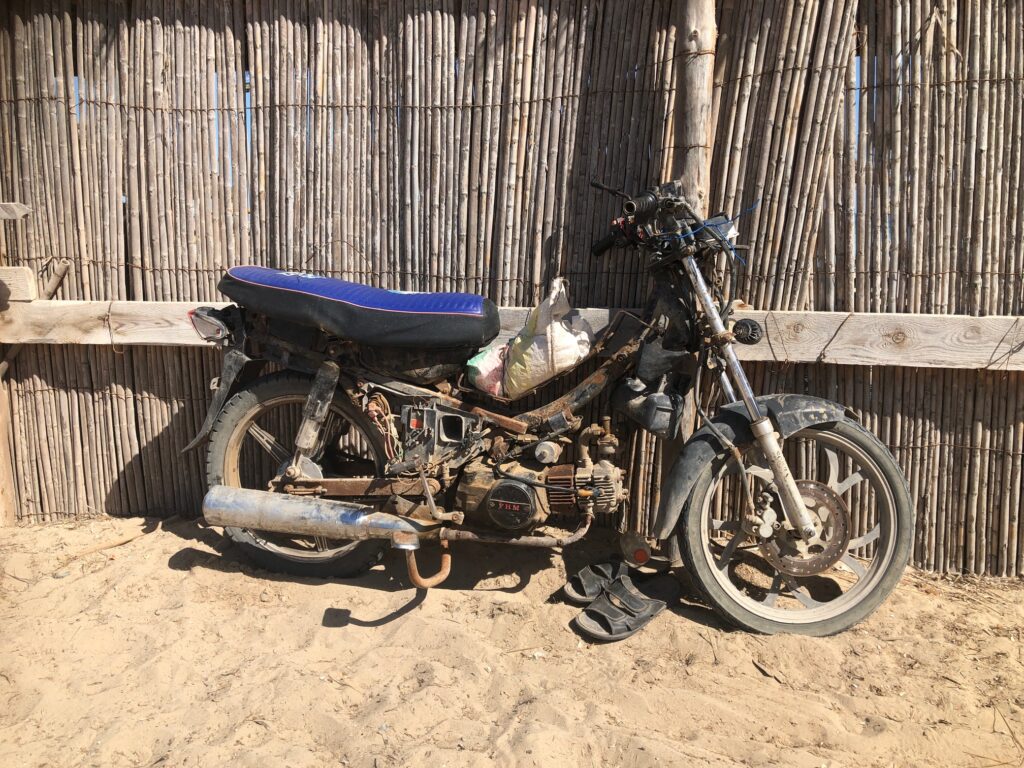
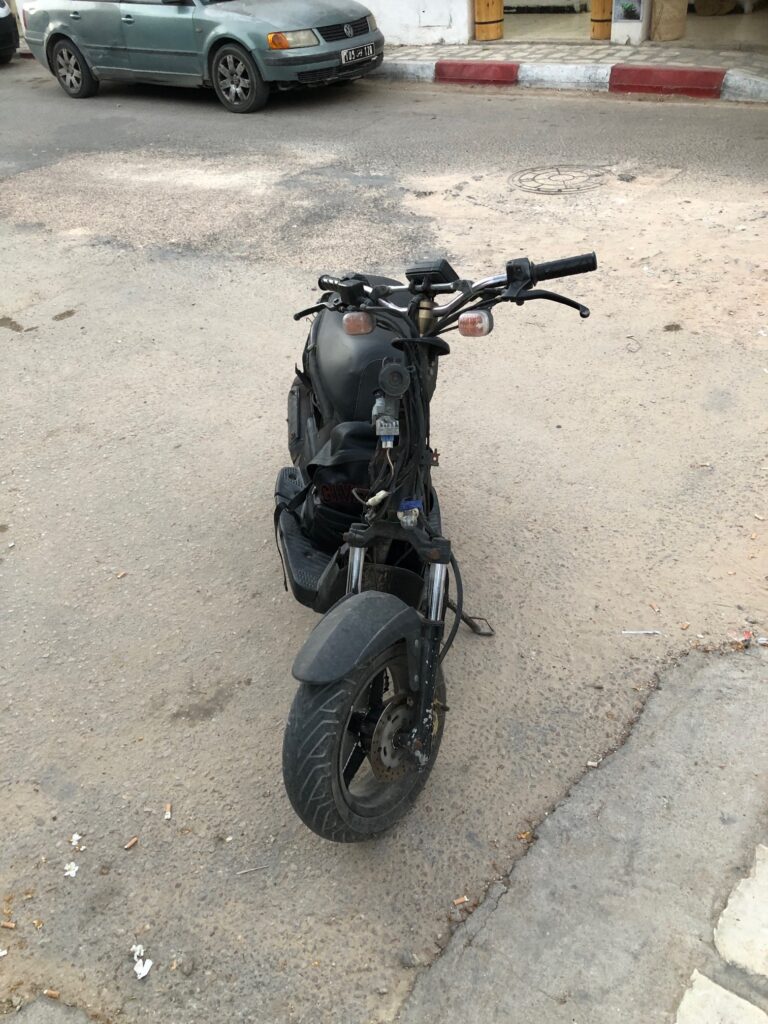

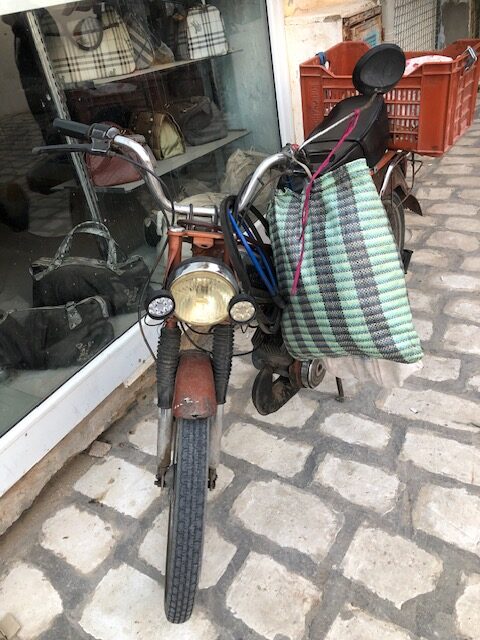
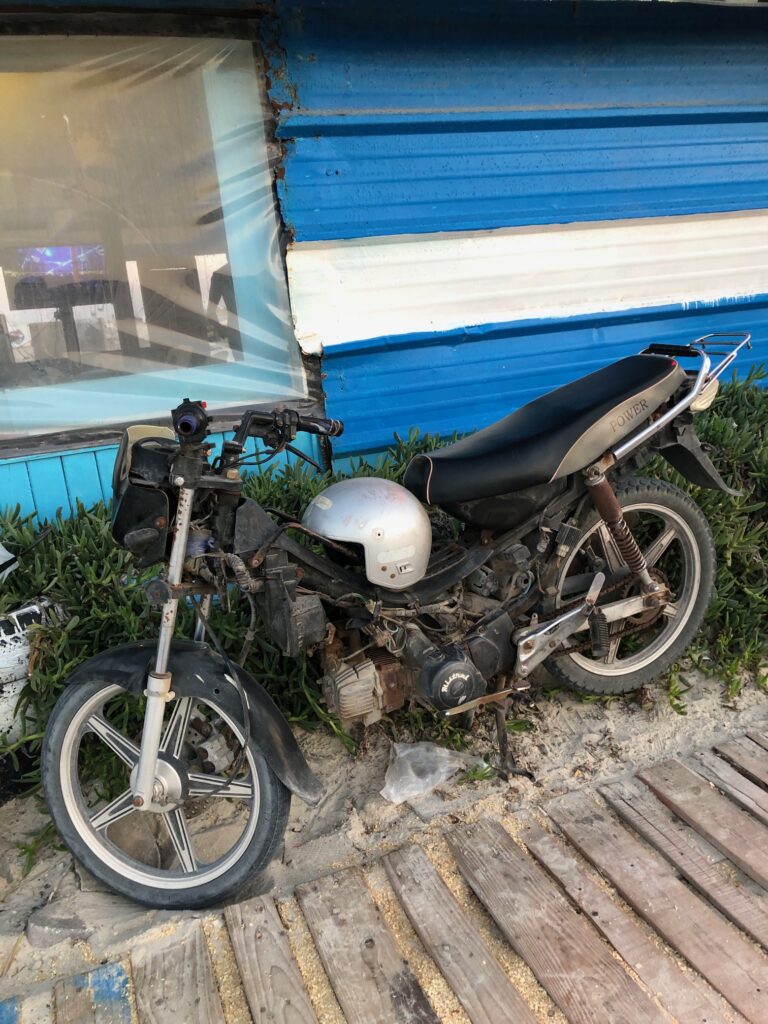
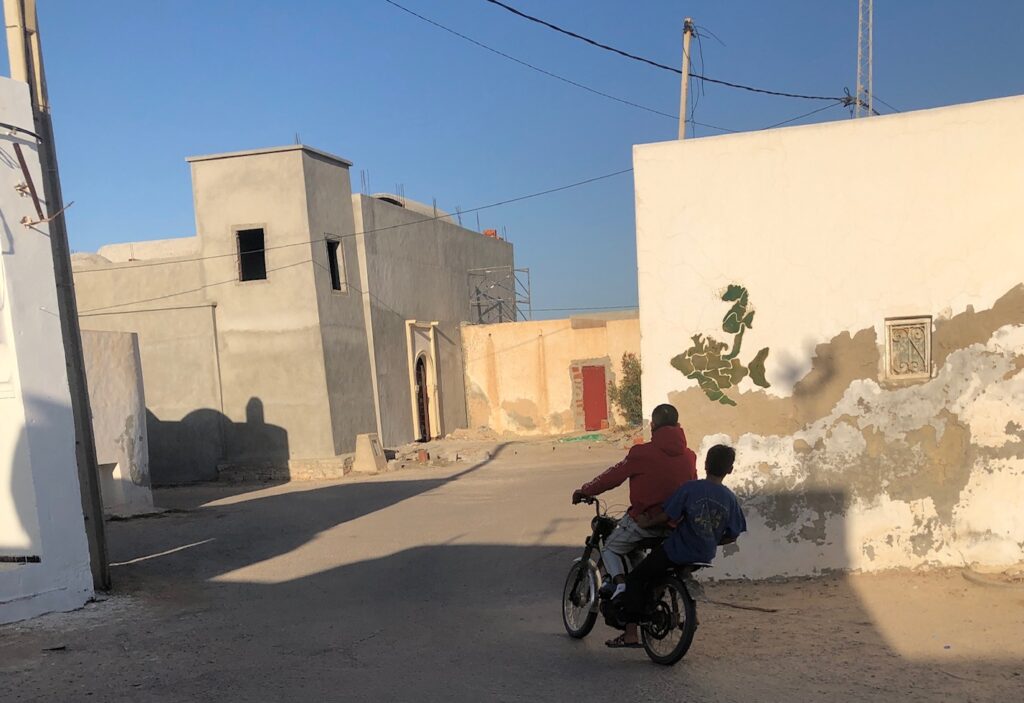
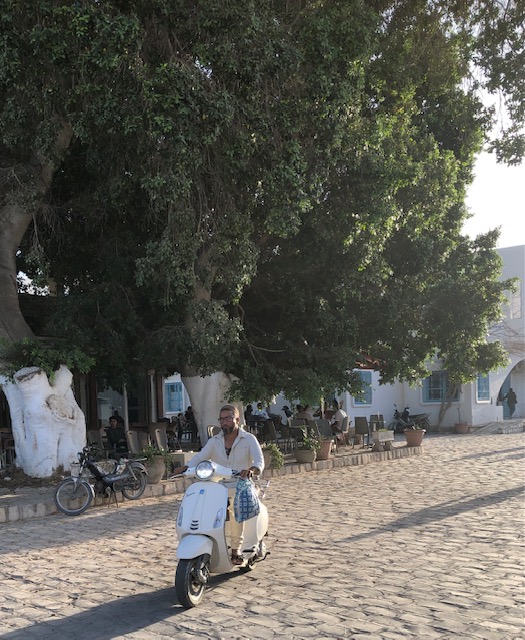
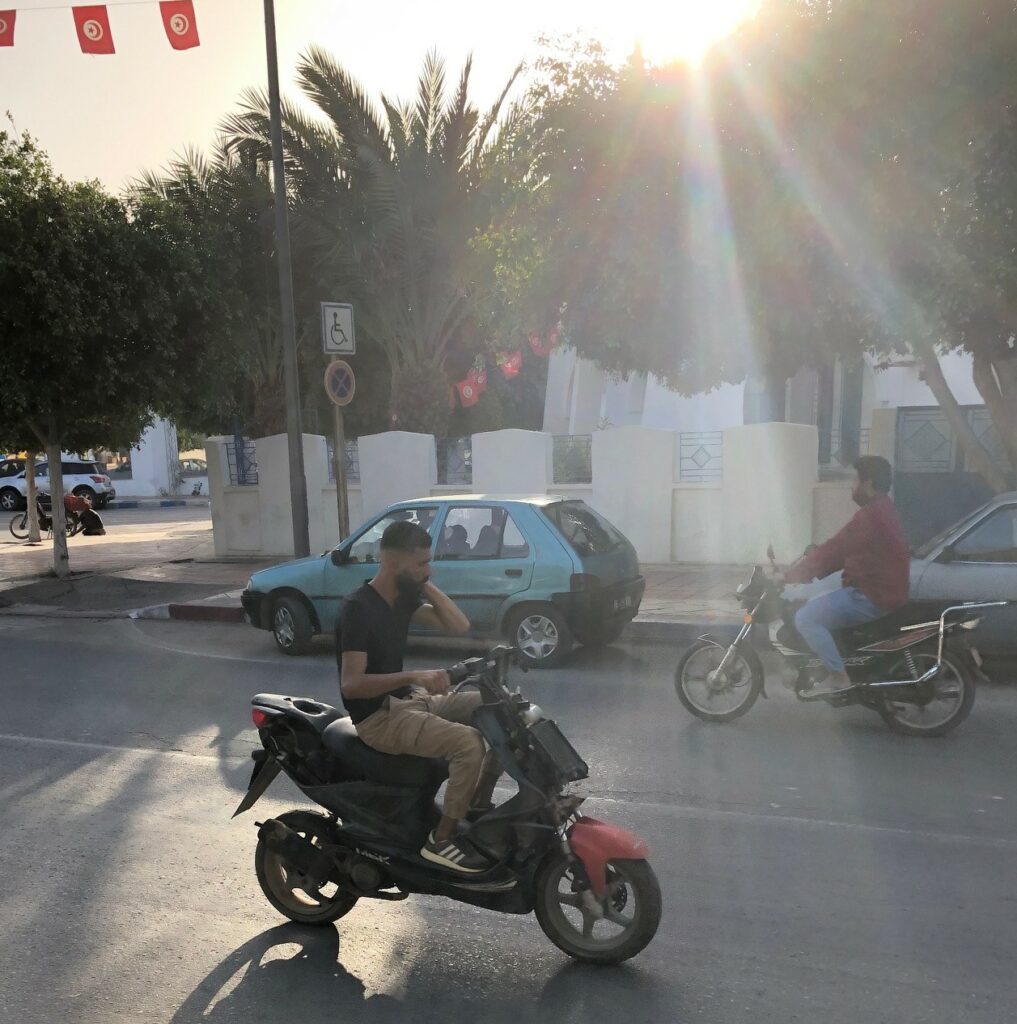
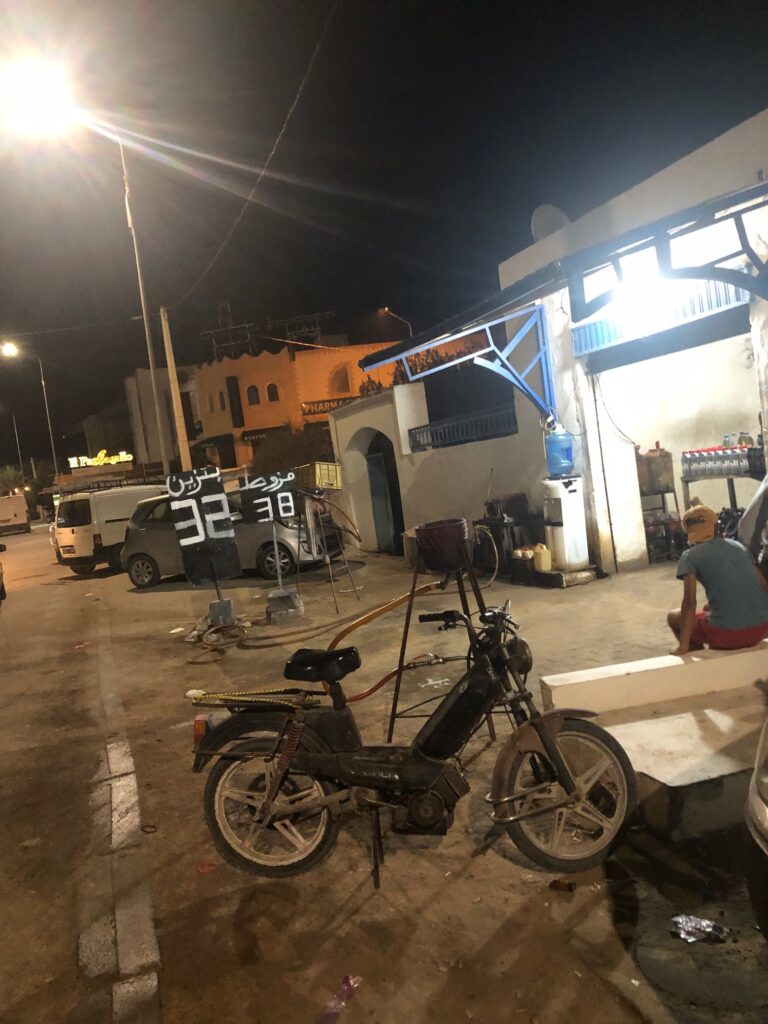
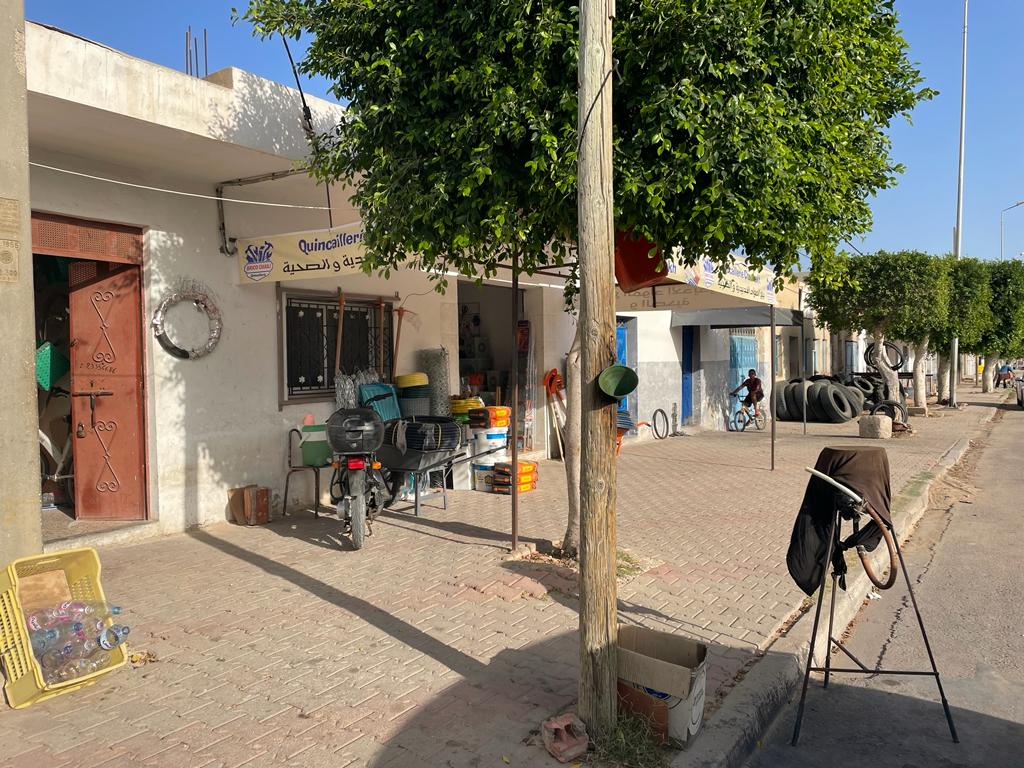
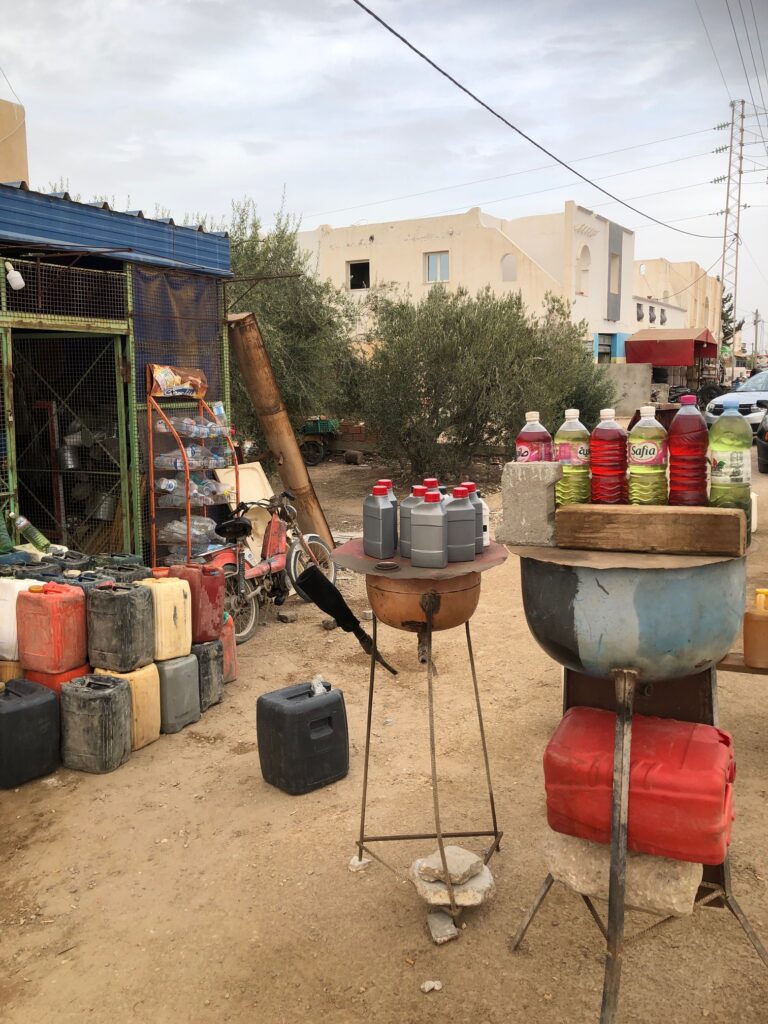
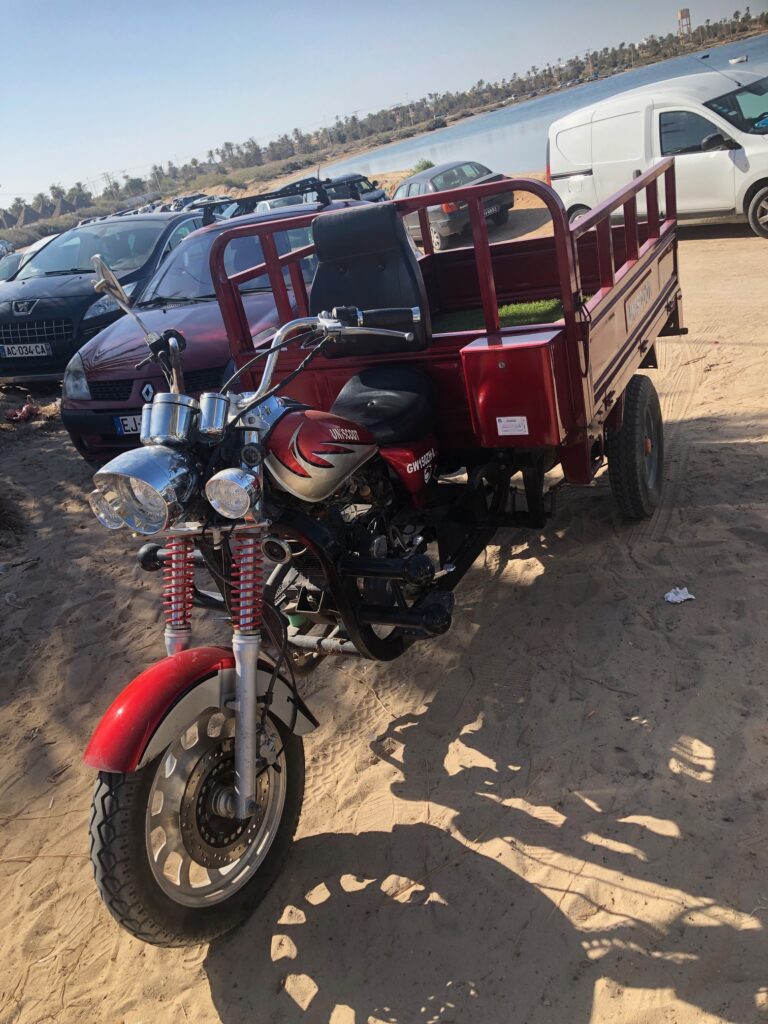
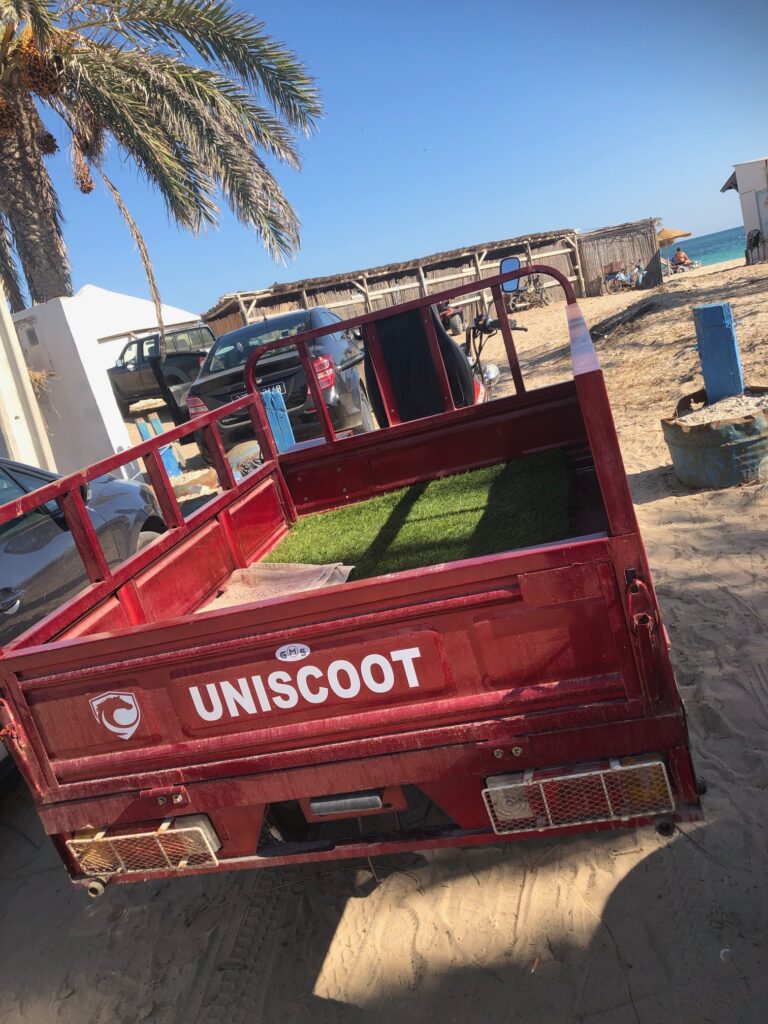
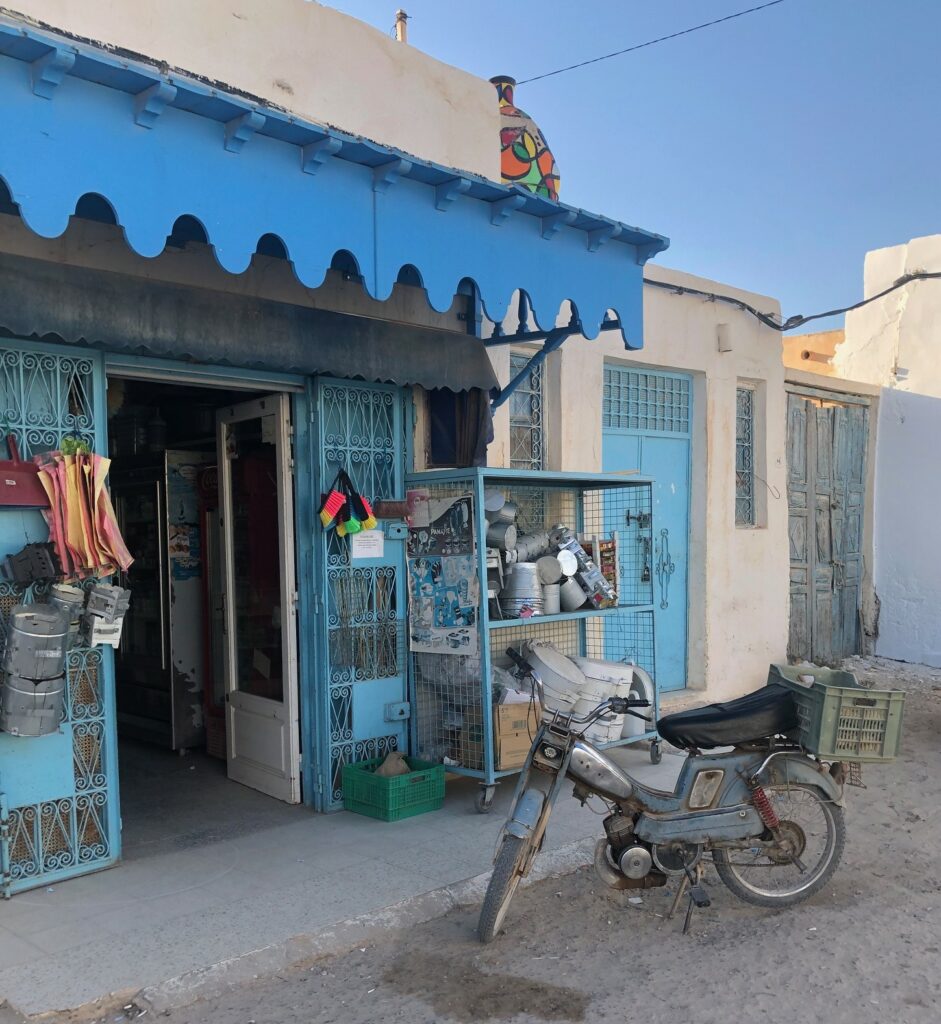
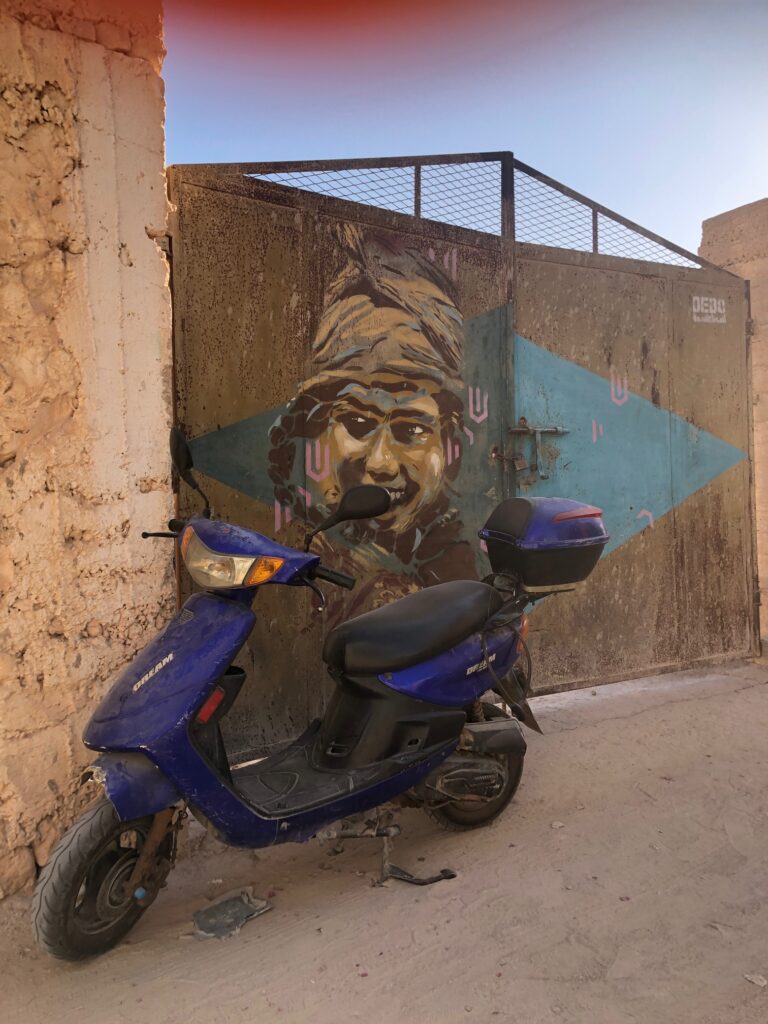
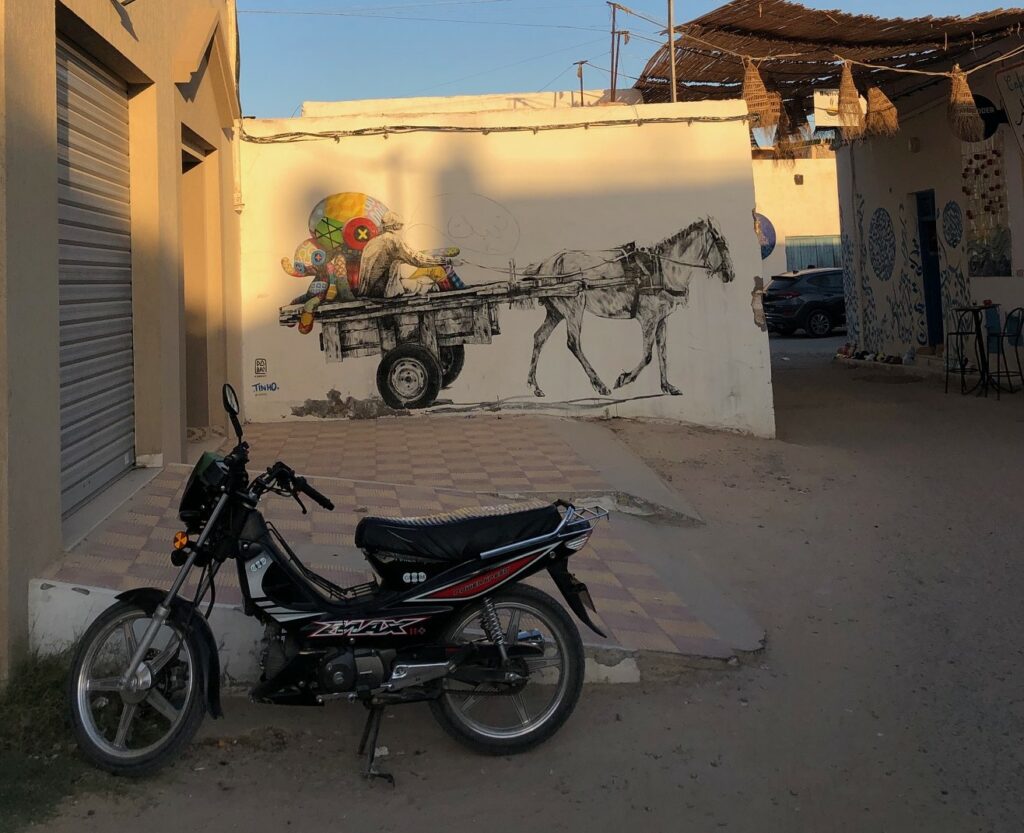
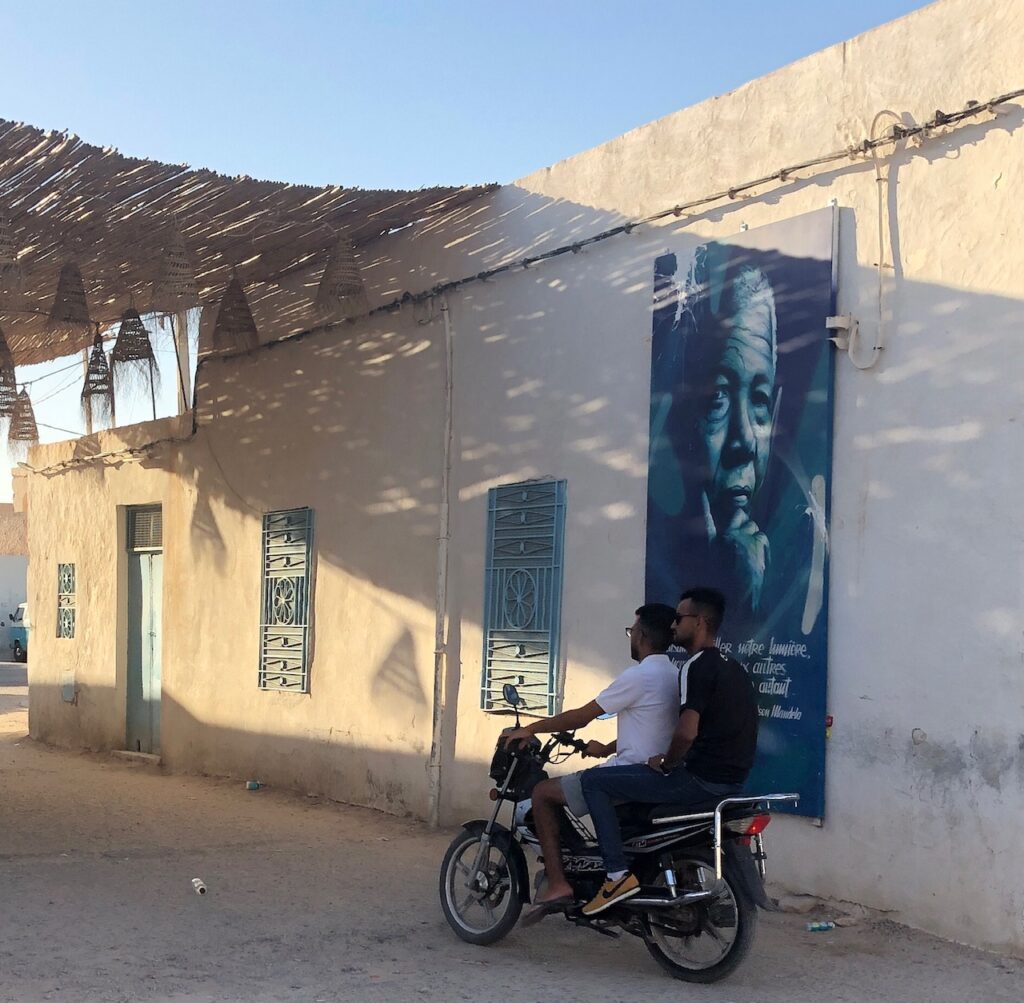
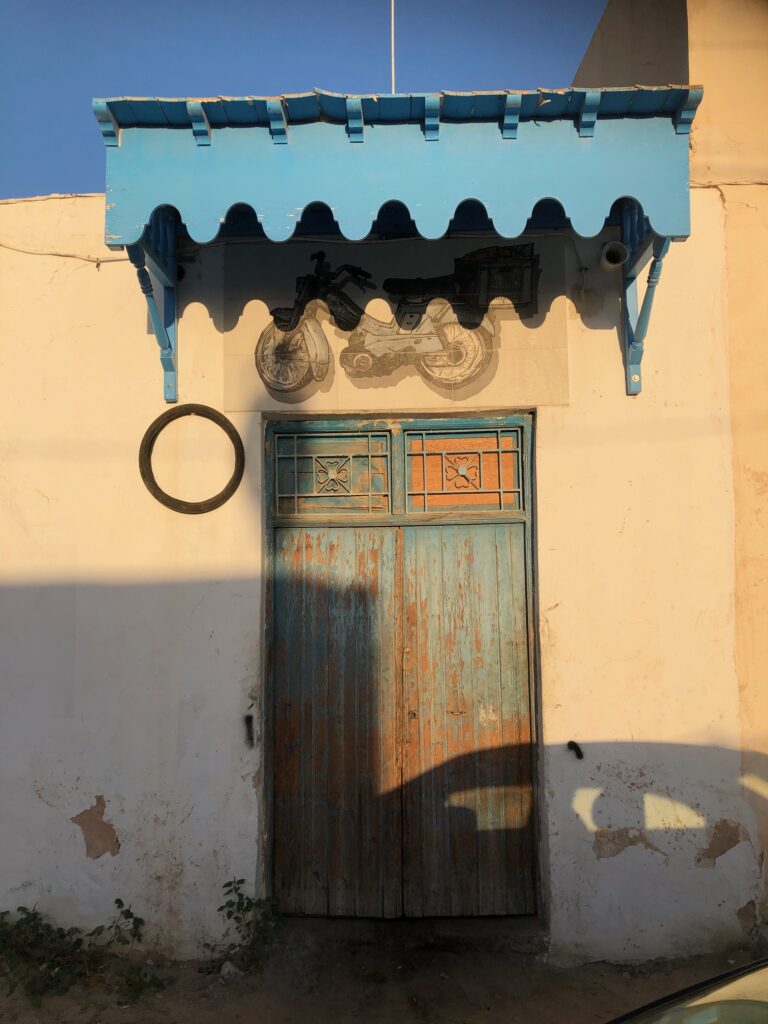
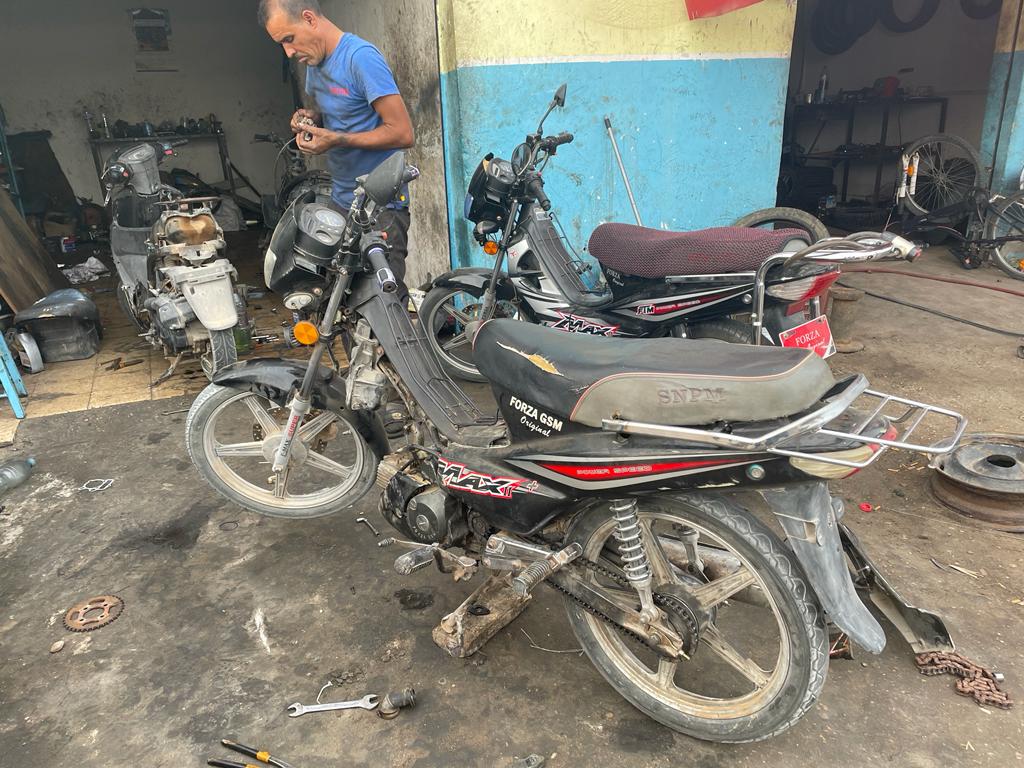
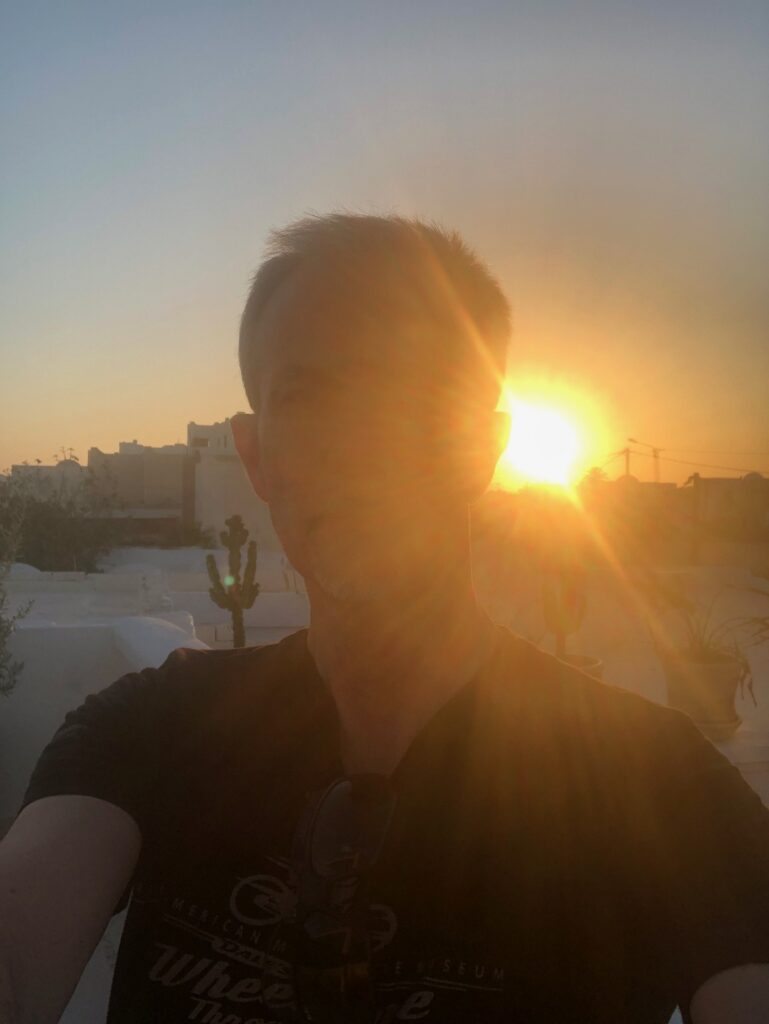
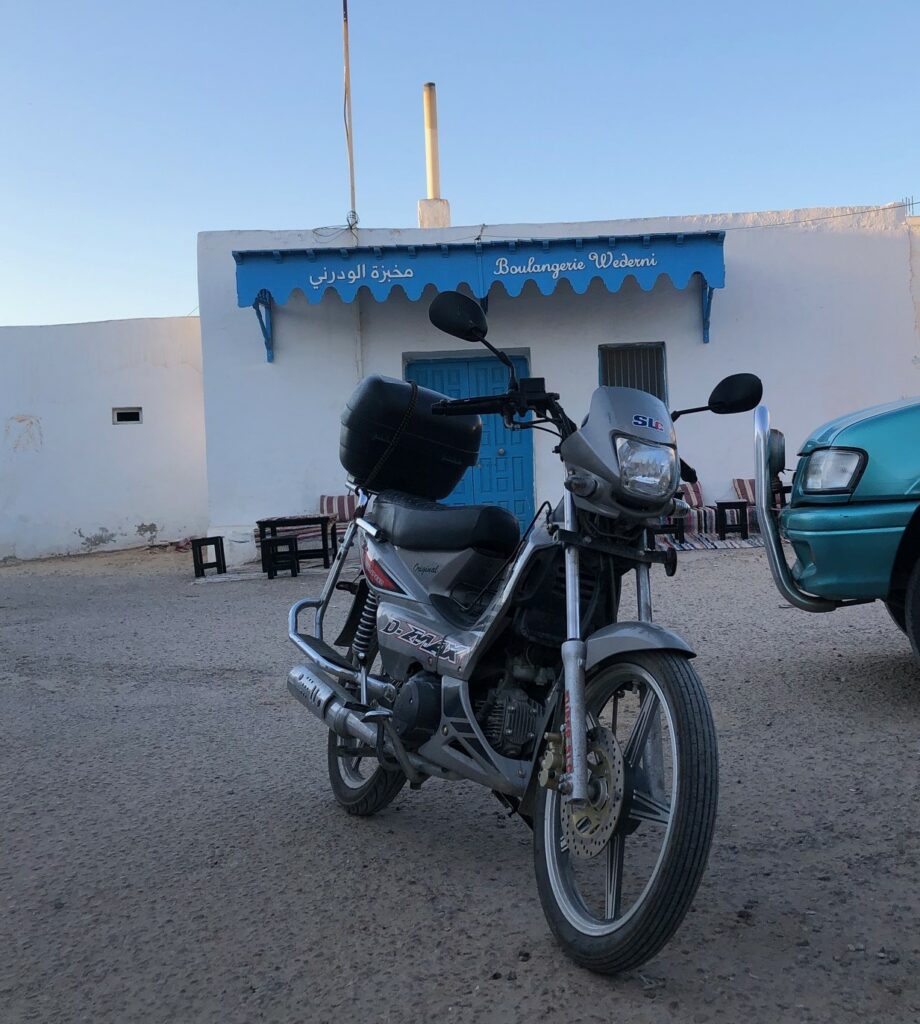
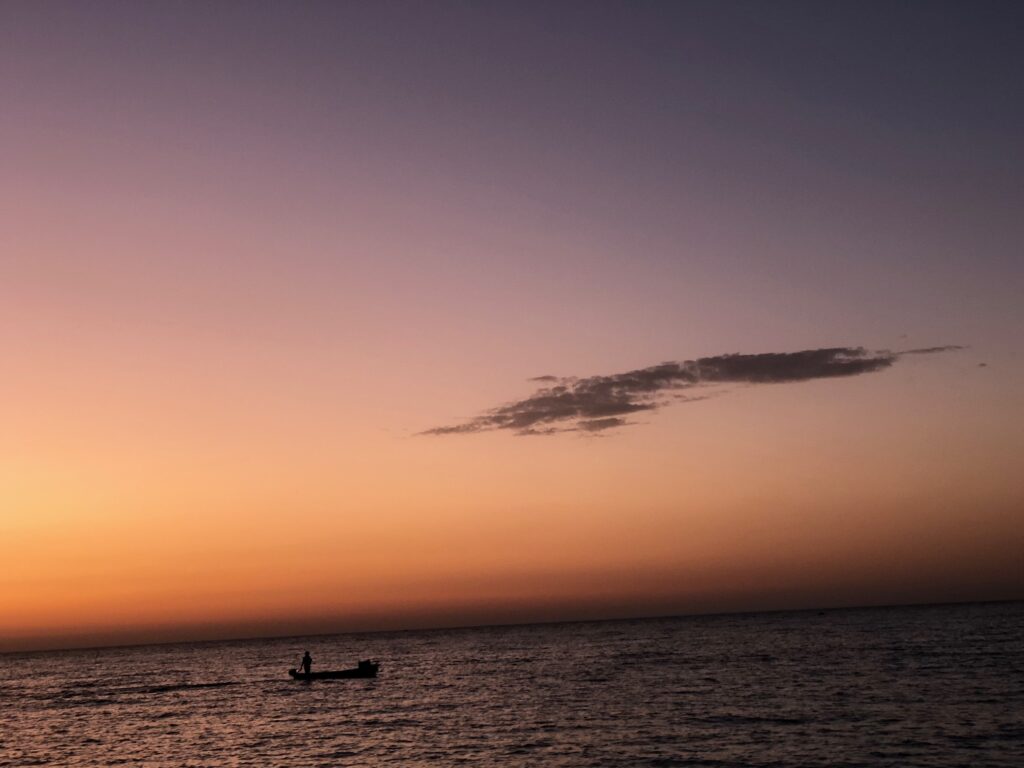
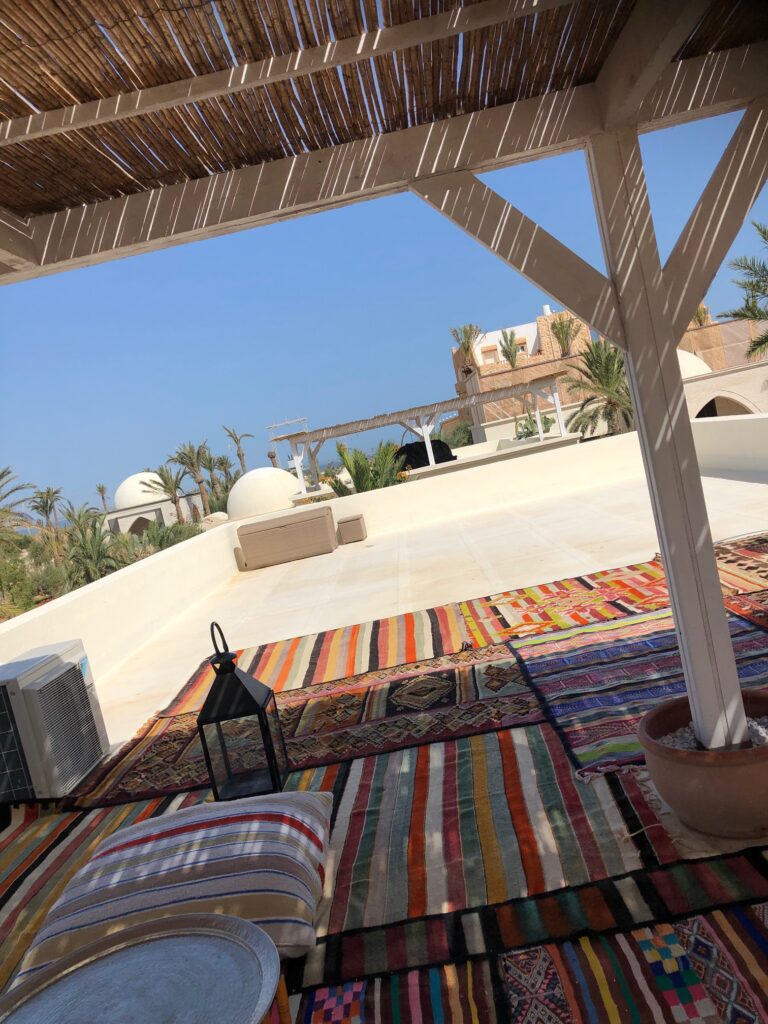
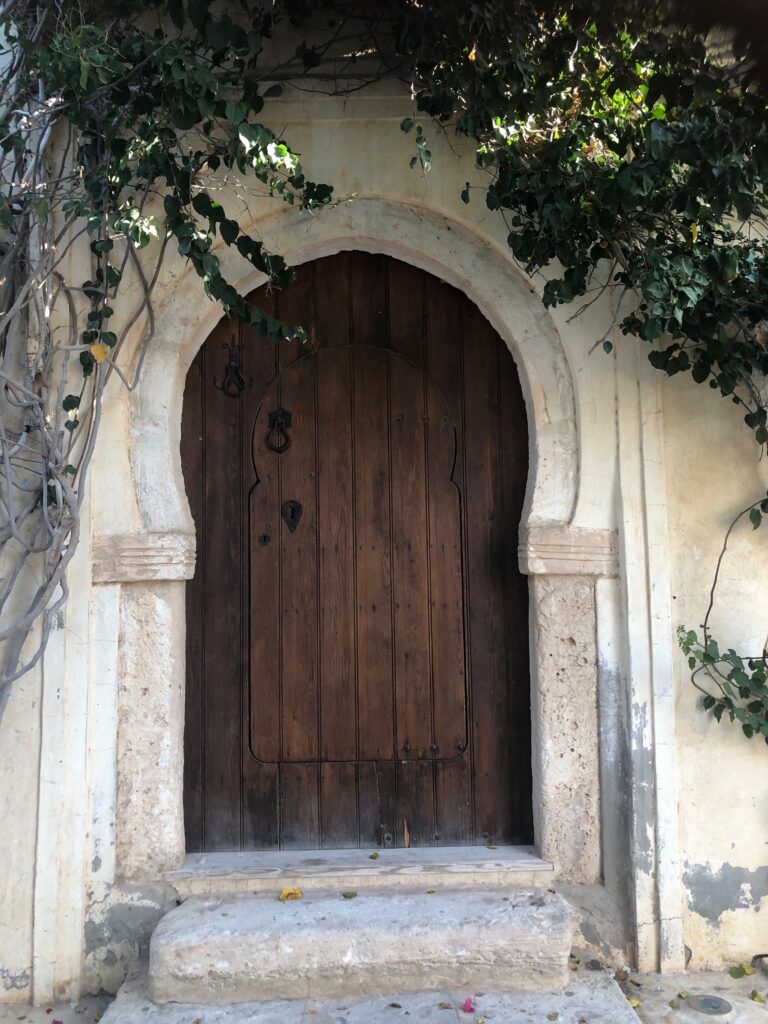
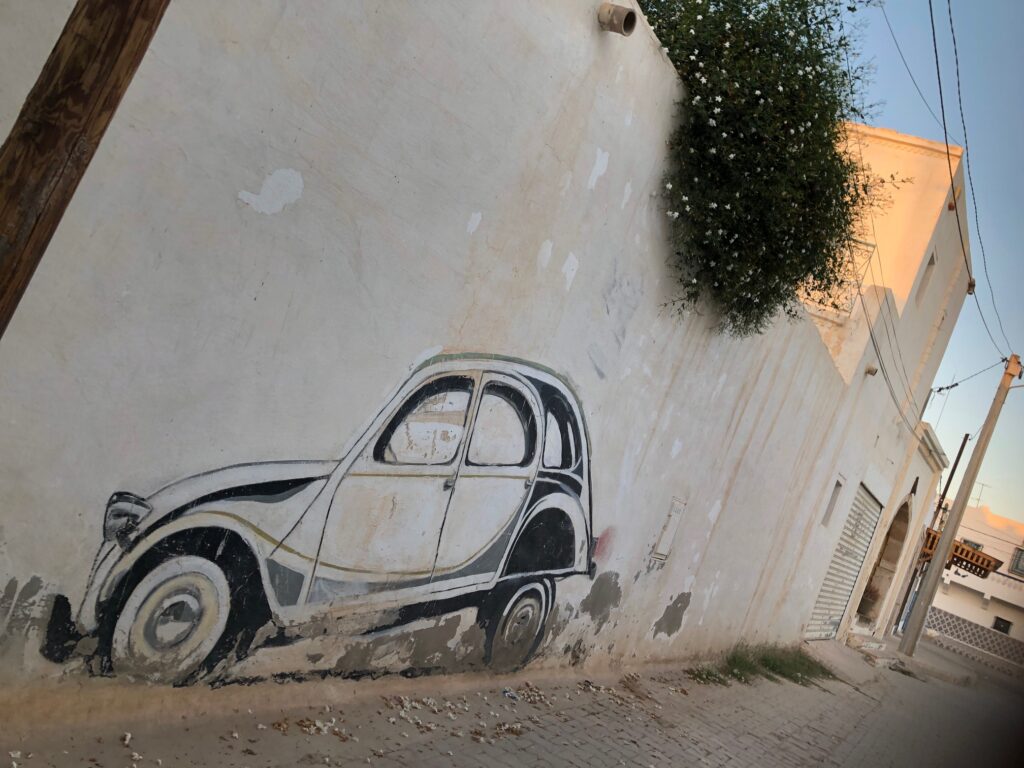
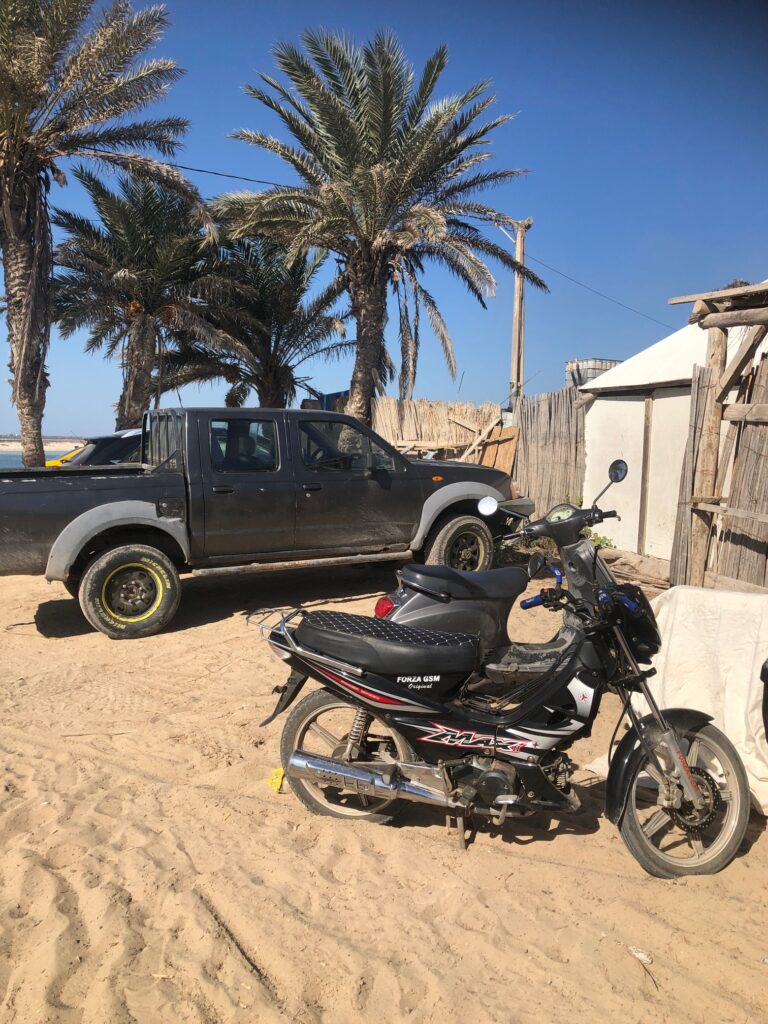
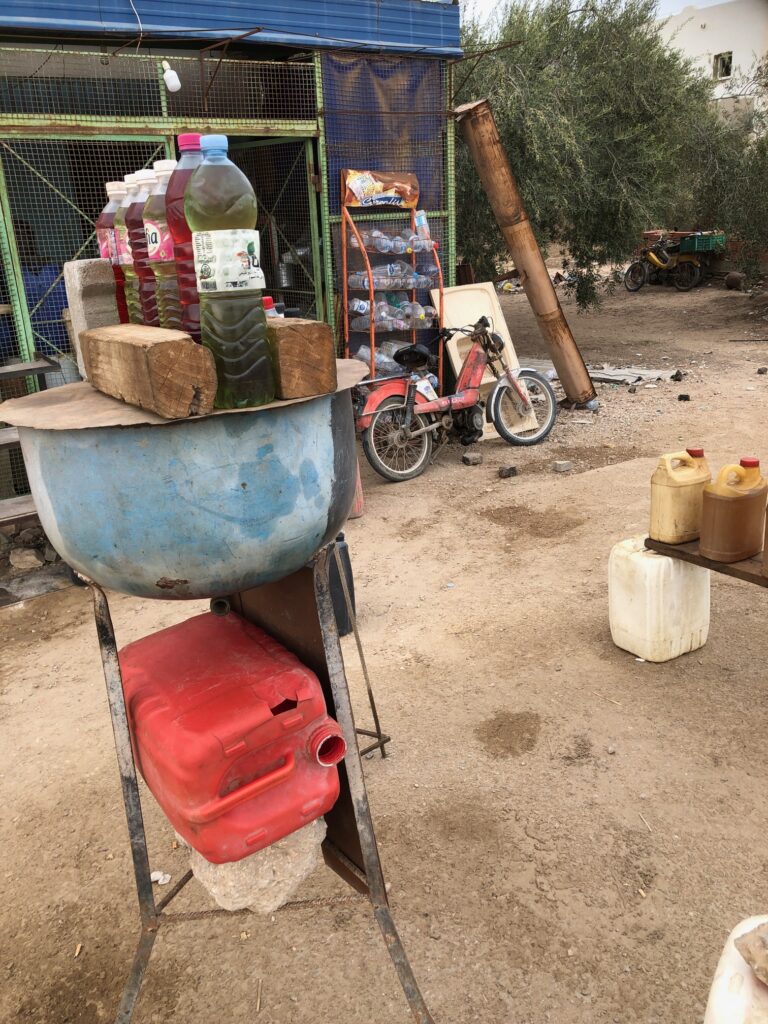
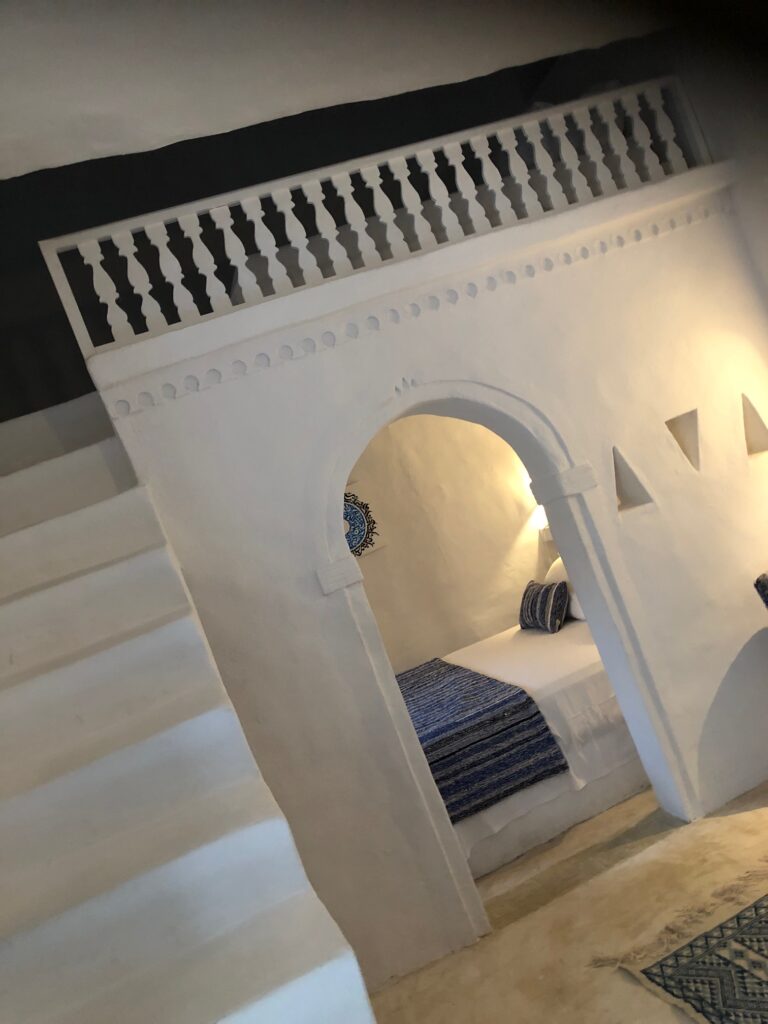
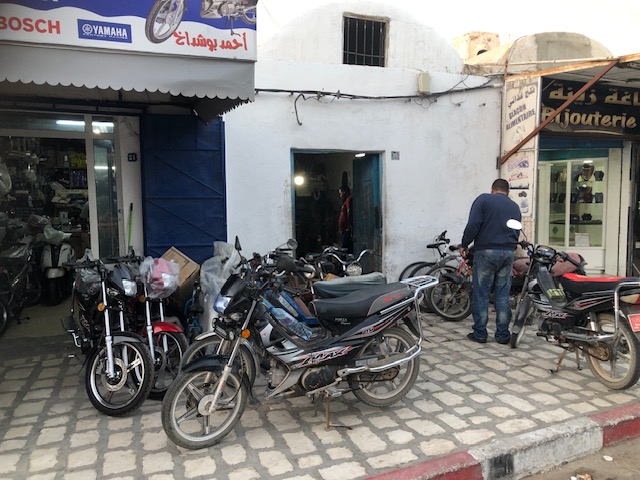
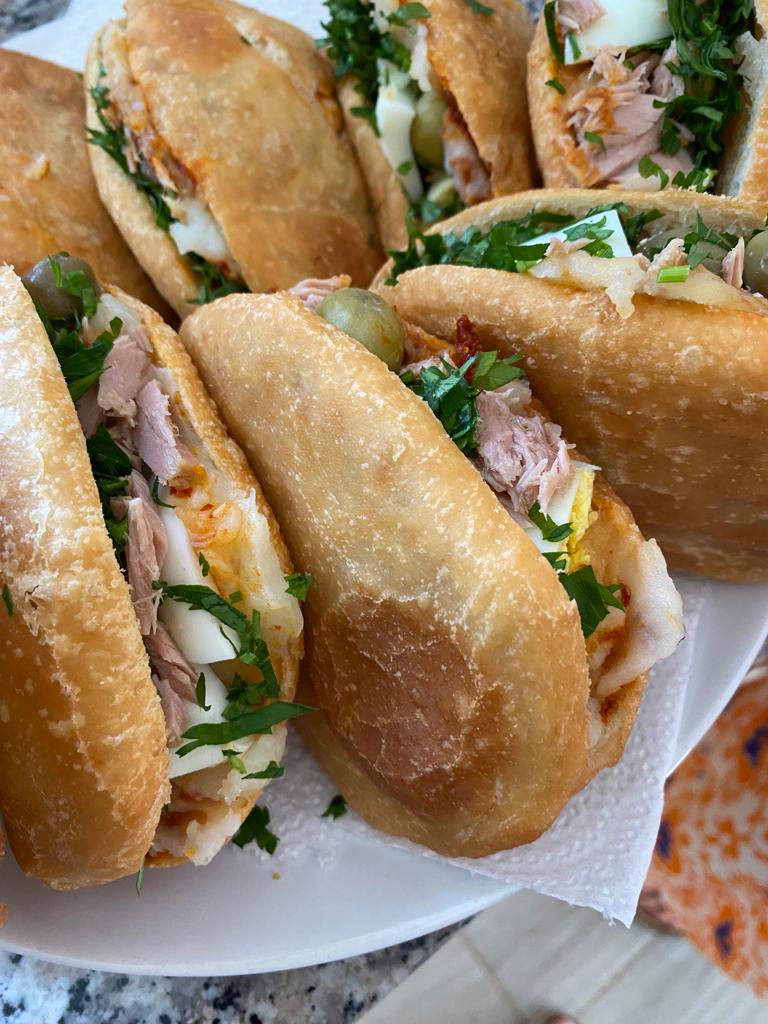
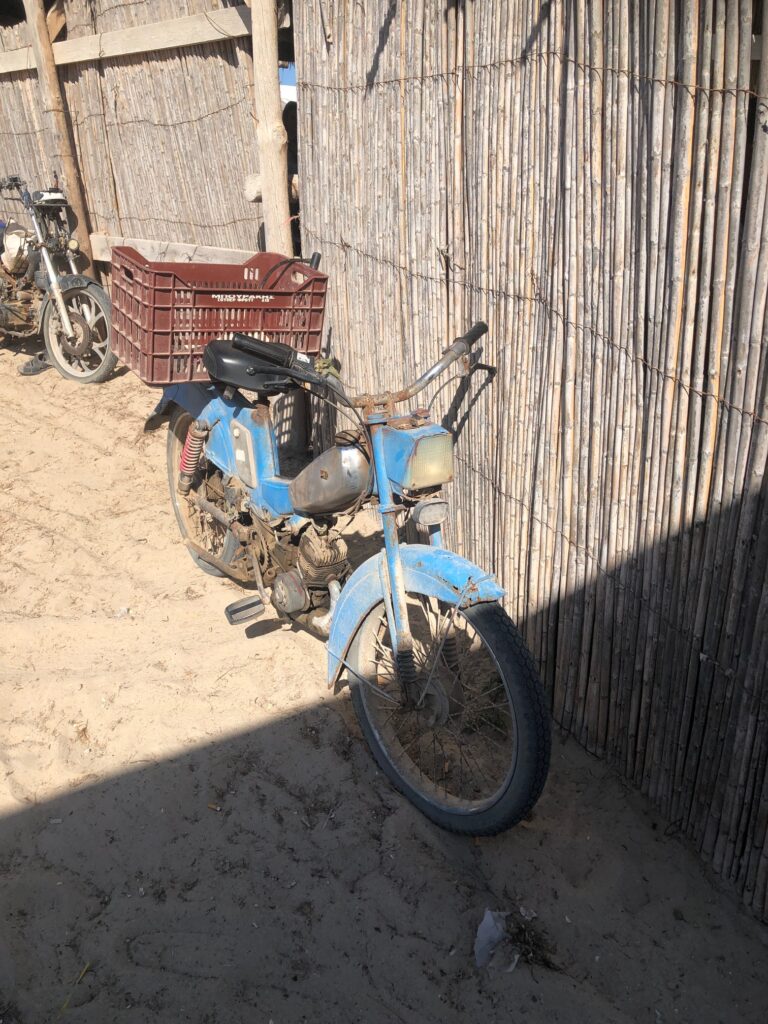
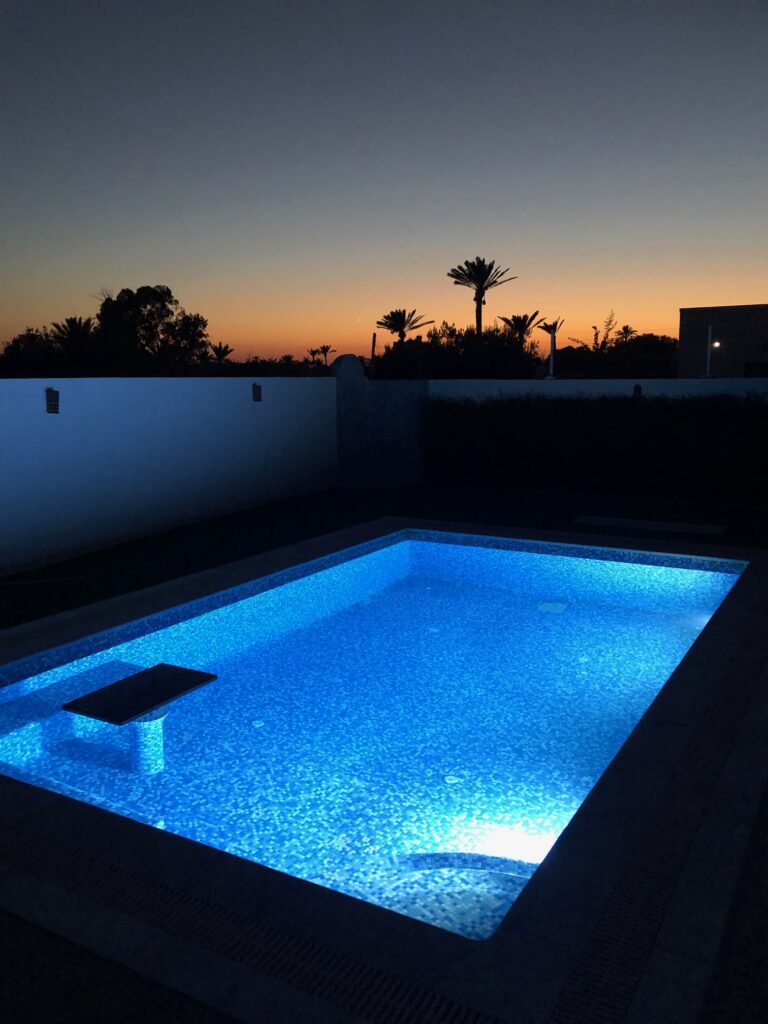
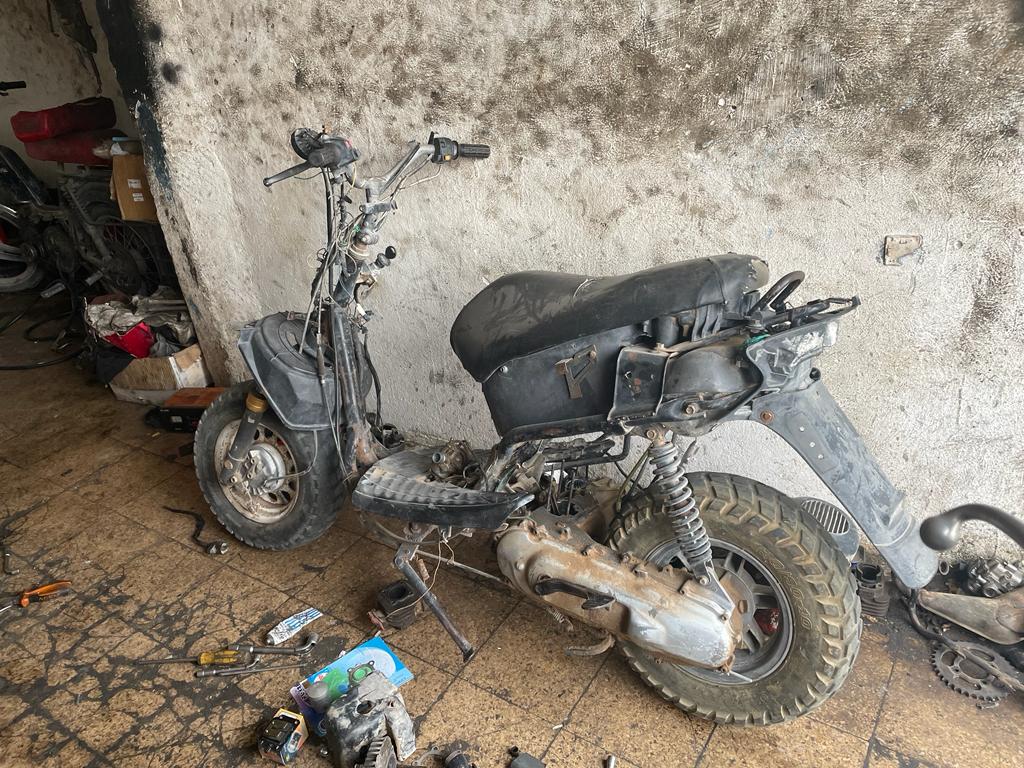
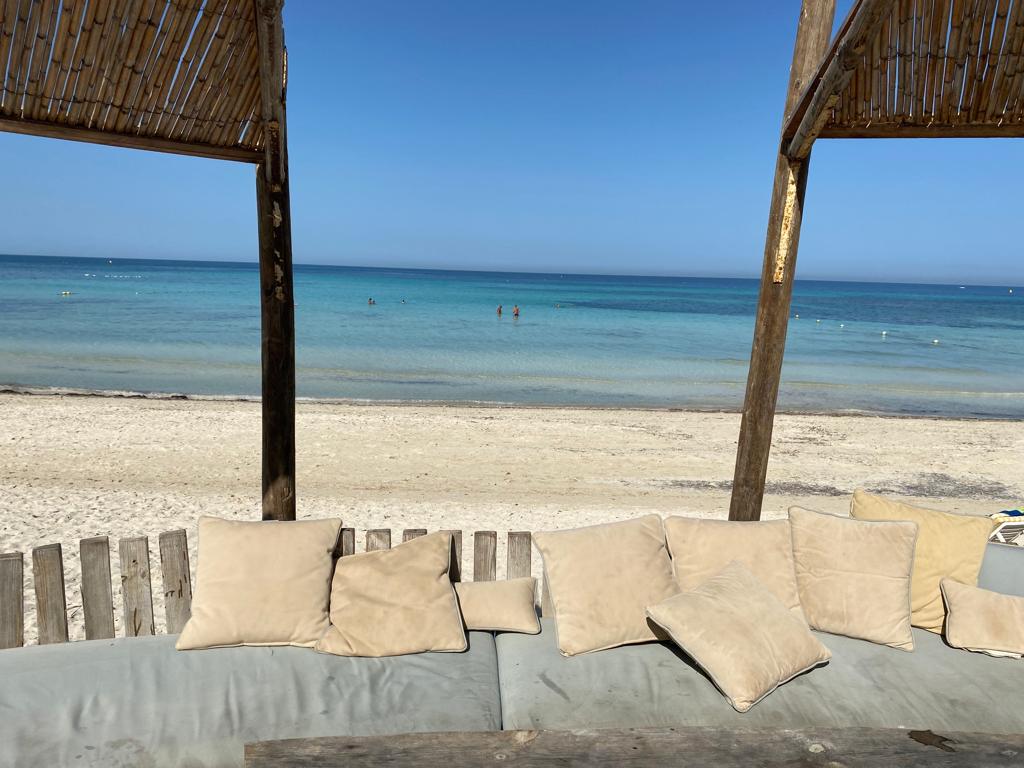
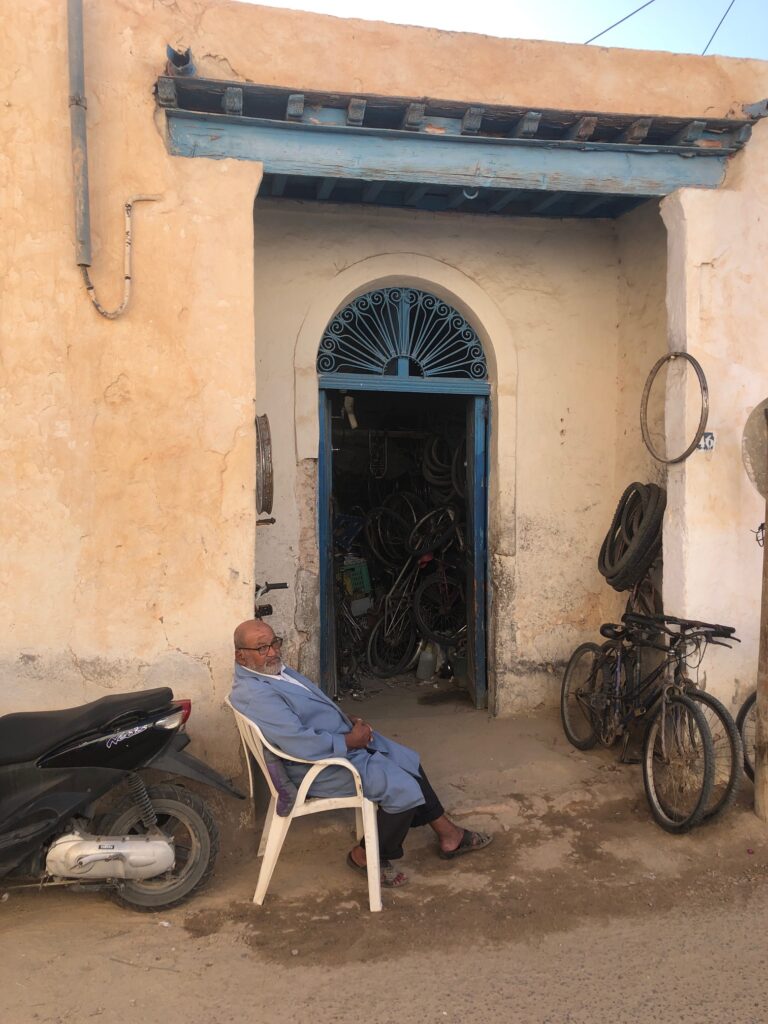
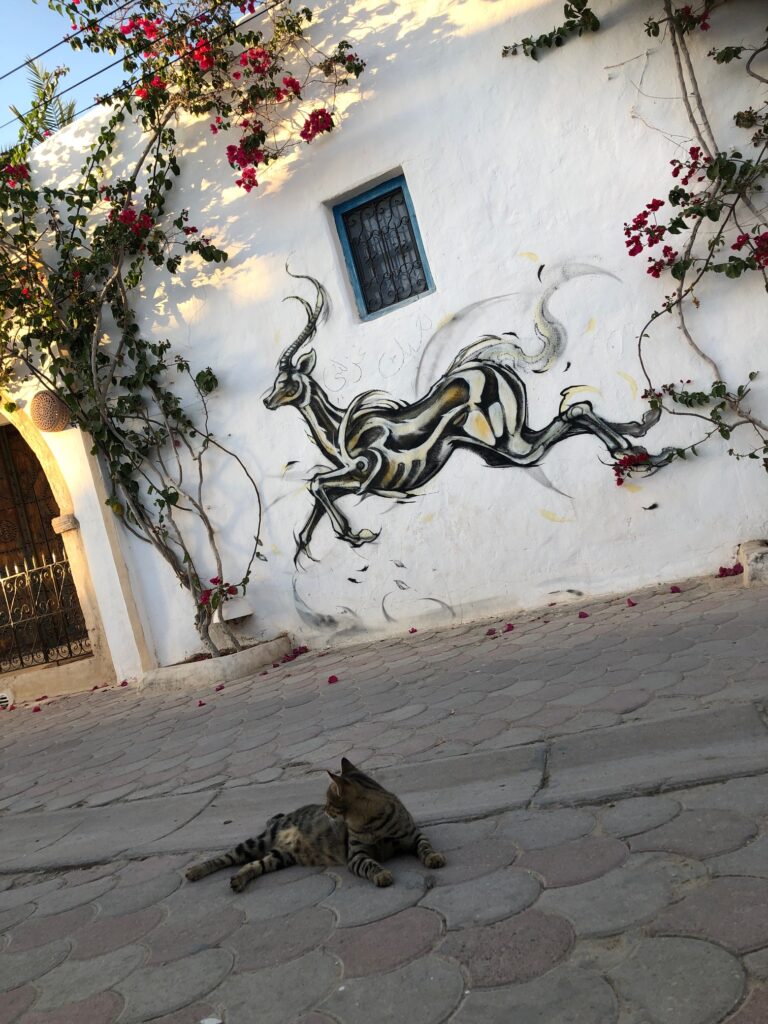
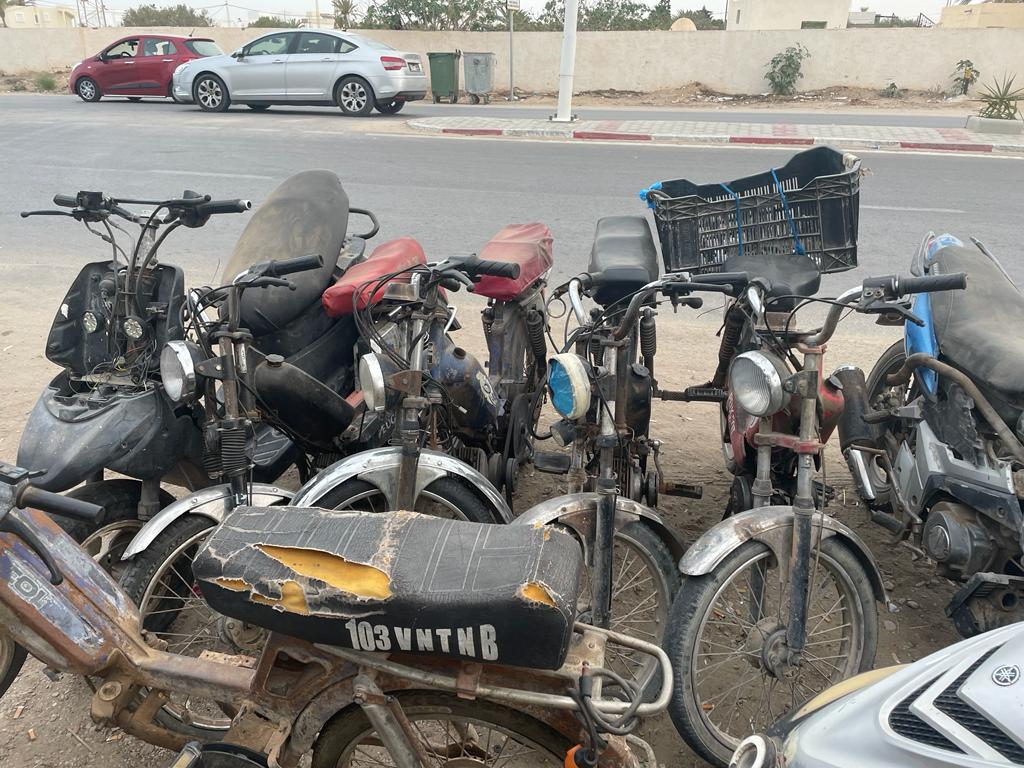
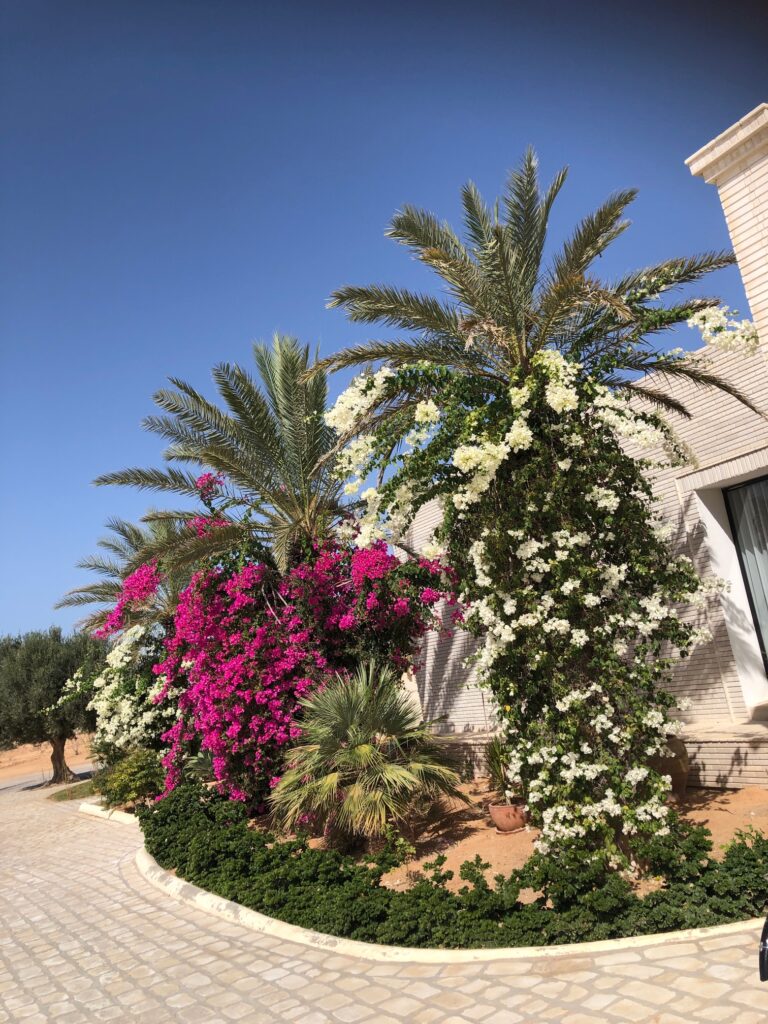
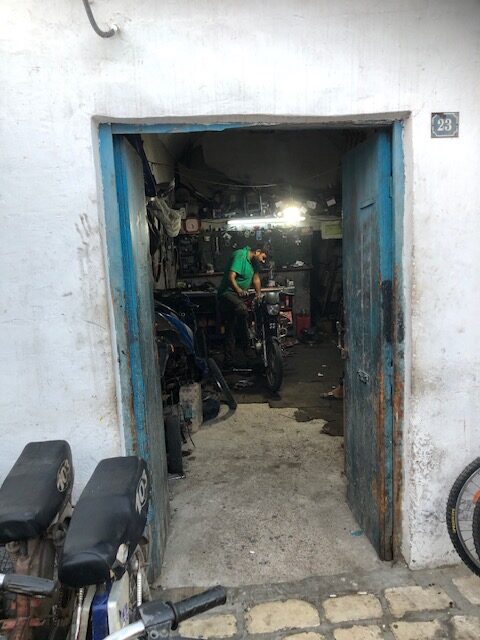
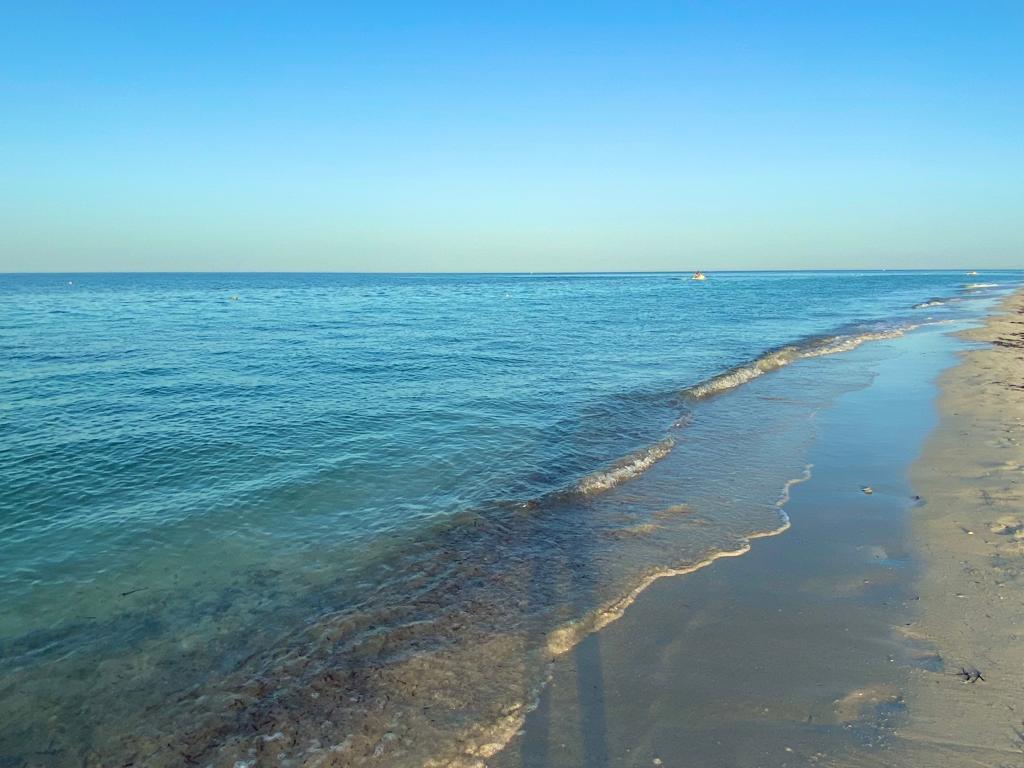
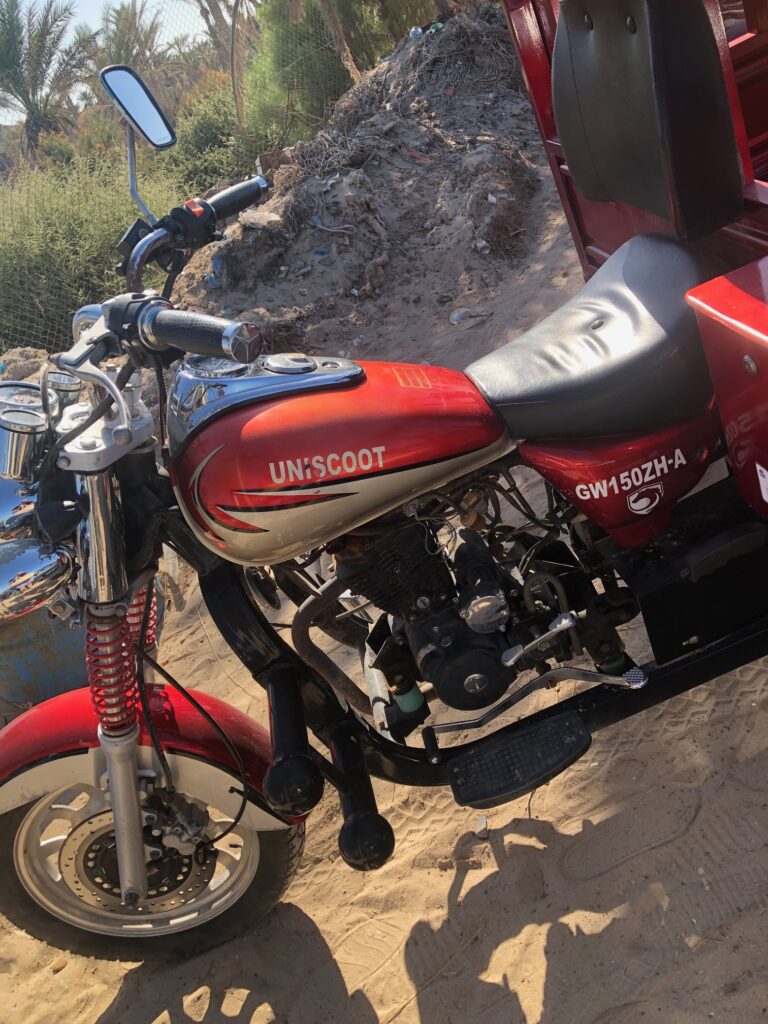
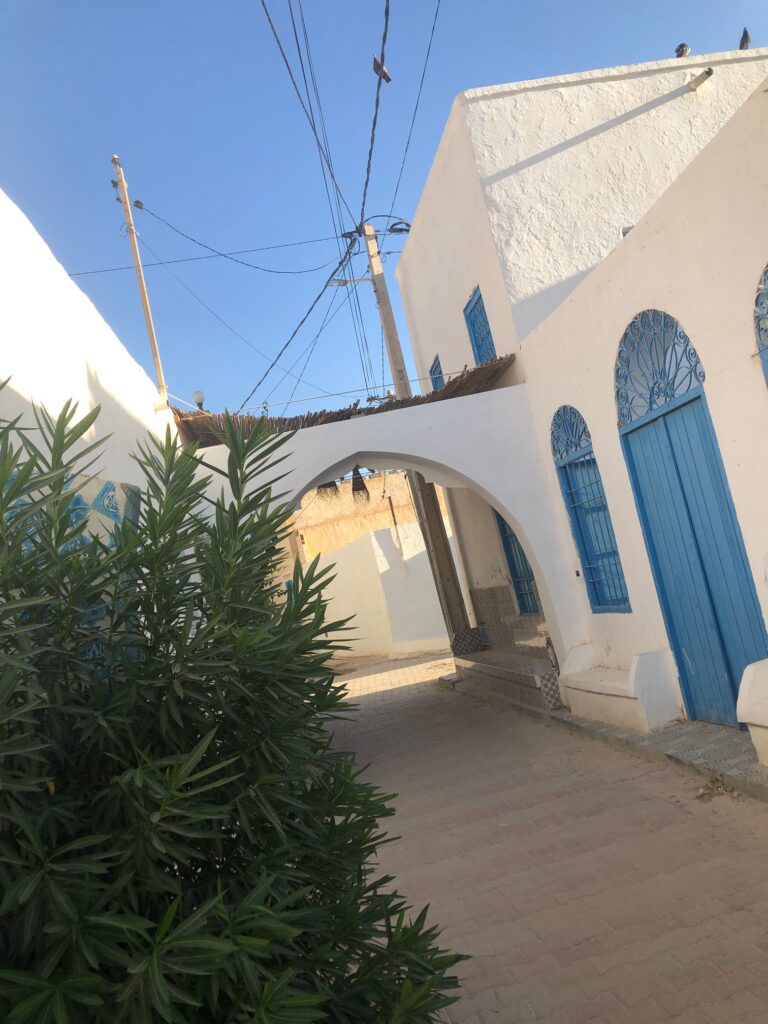
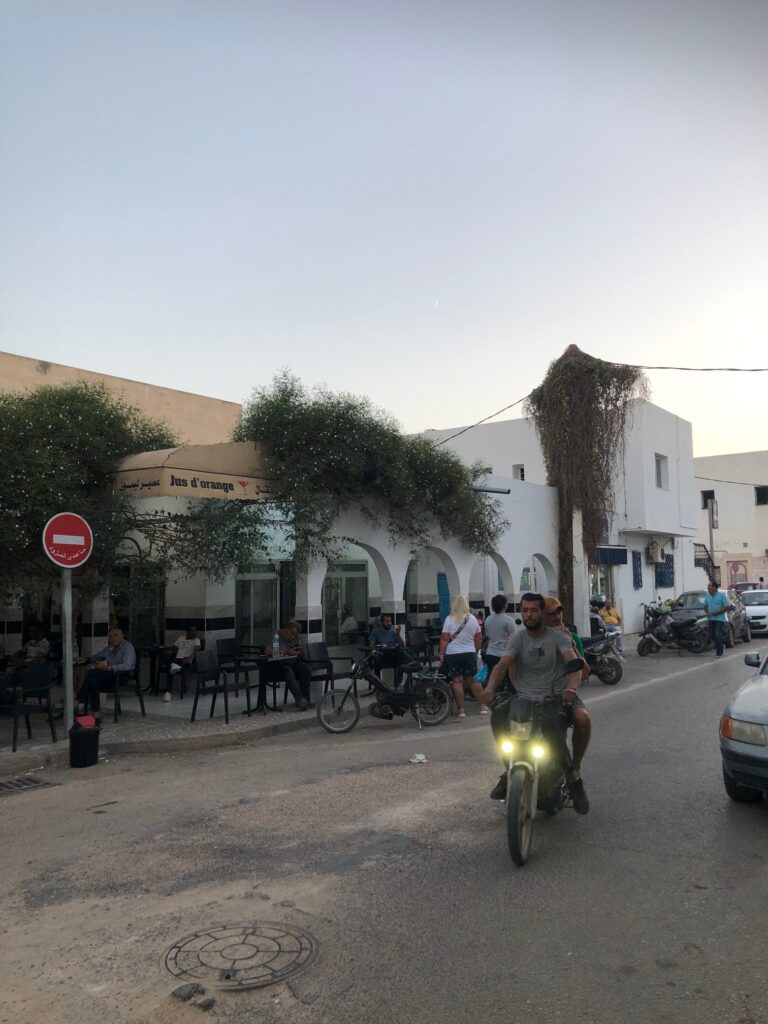




More Stories
RIDE TO THE GALLO-ROMAN SITE IN THE CENTER OF FRANCE
RIDE TO THE CASTLES
RIDE TO THE VALENCIA MARKET